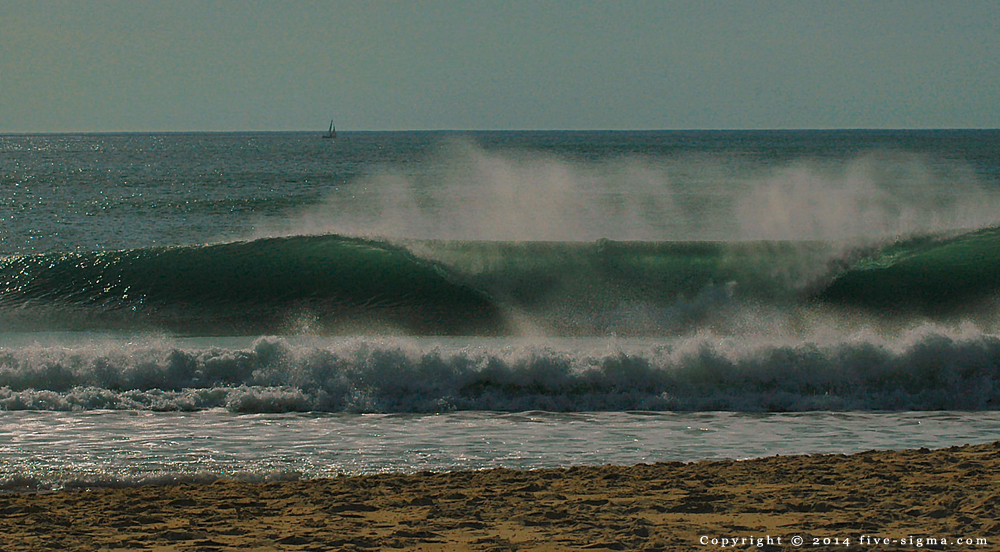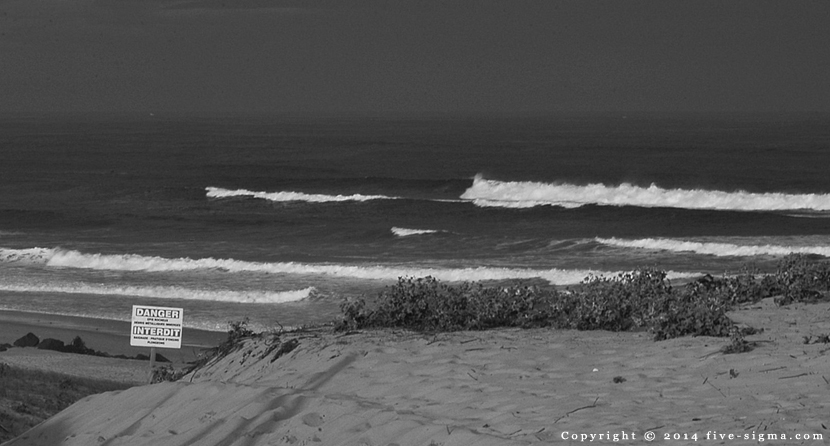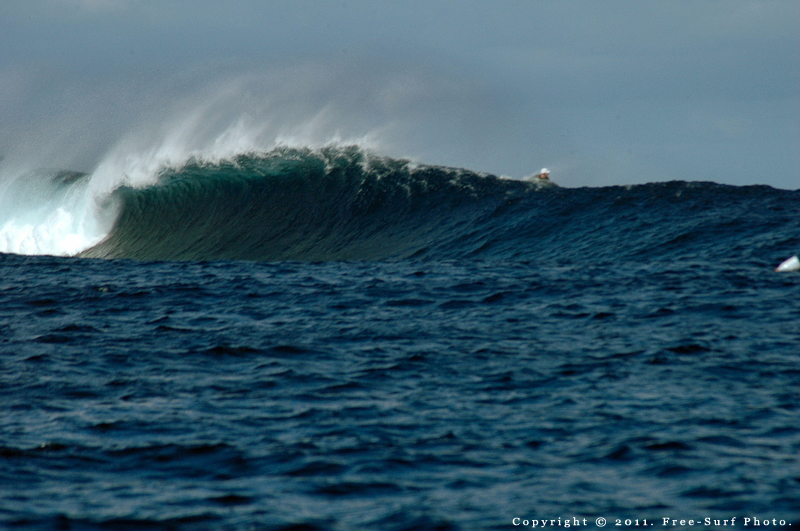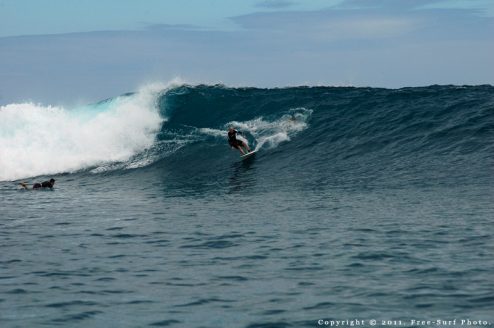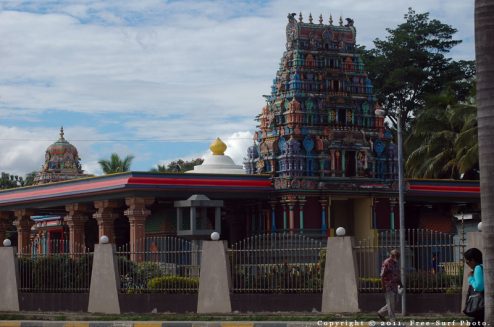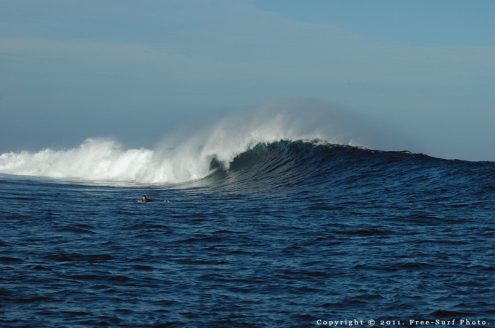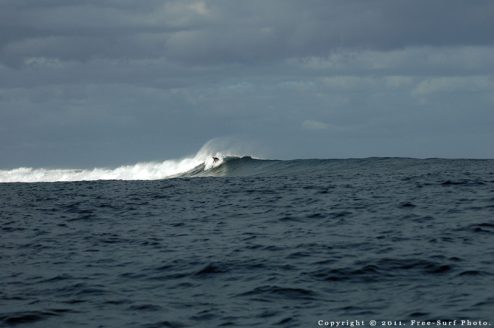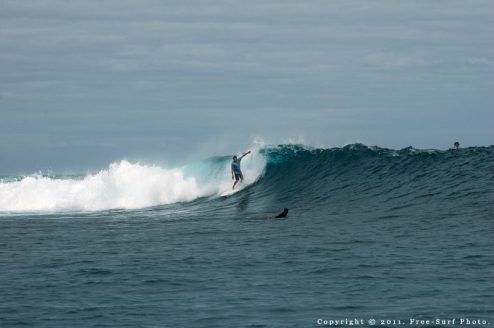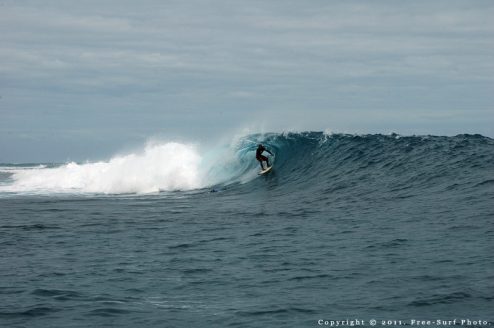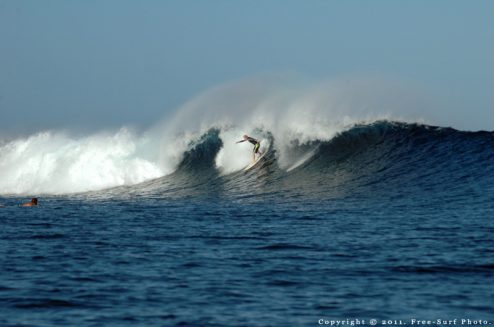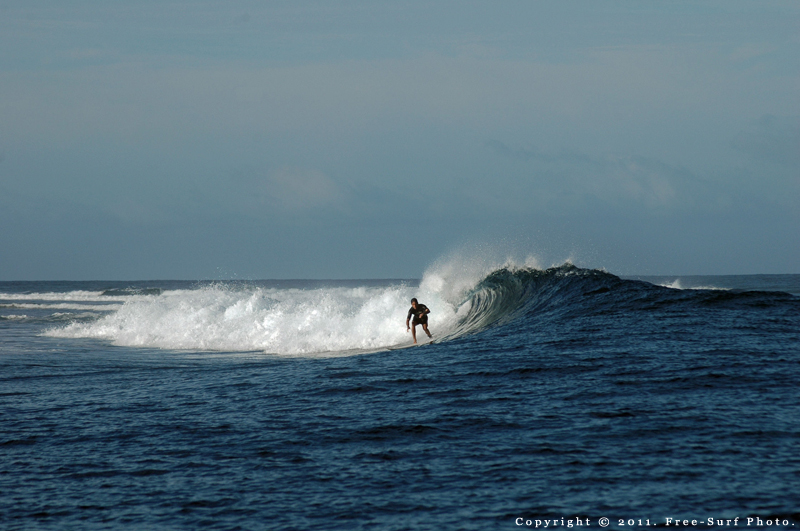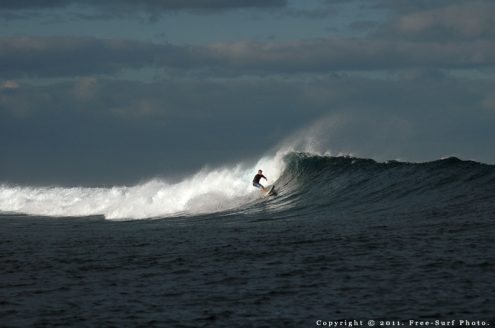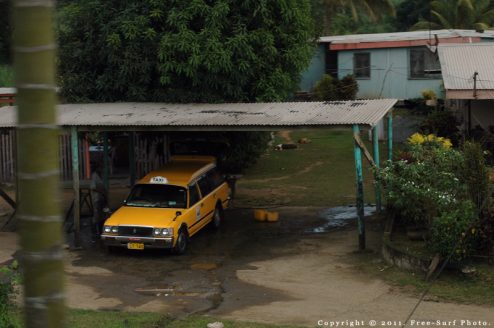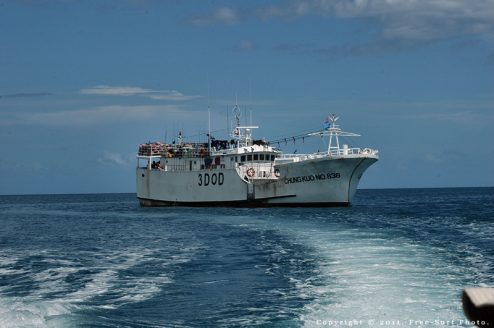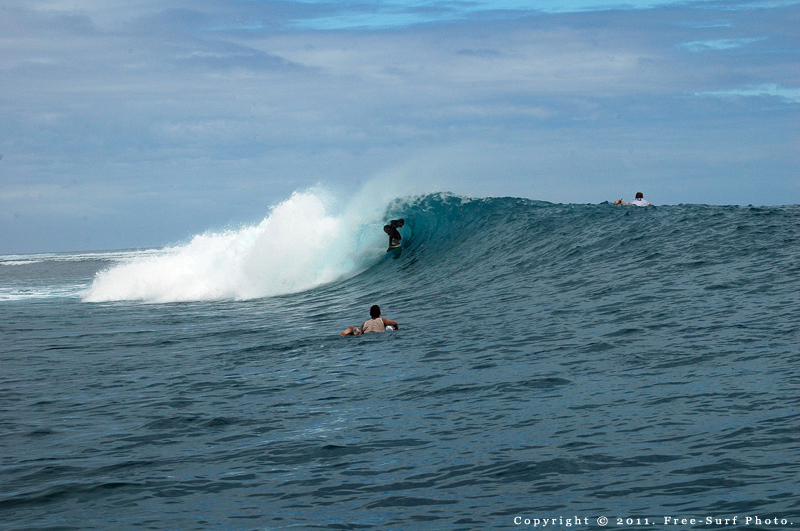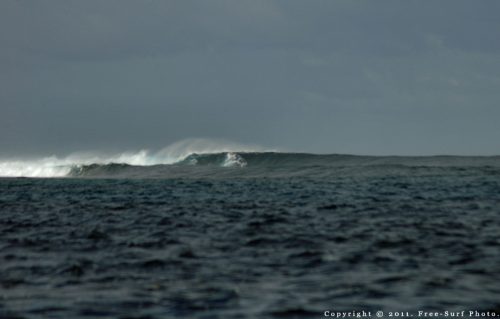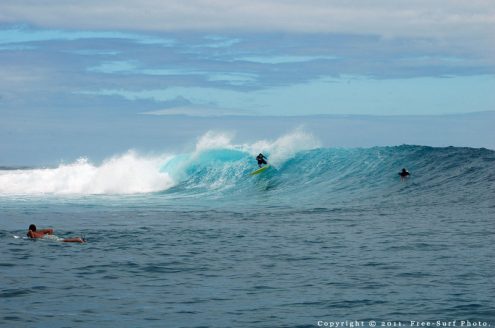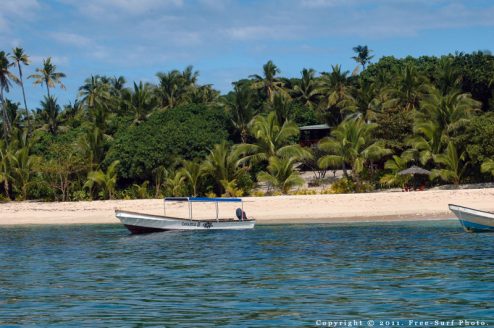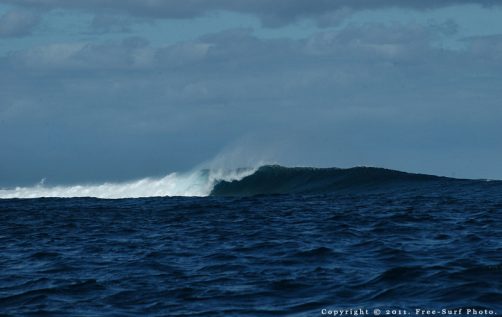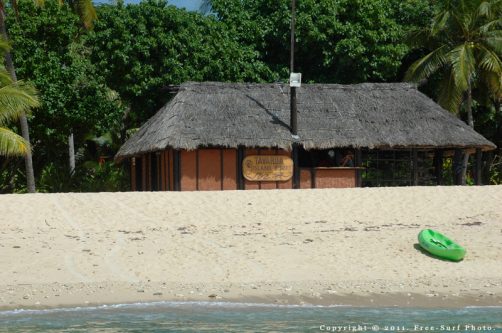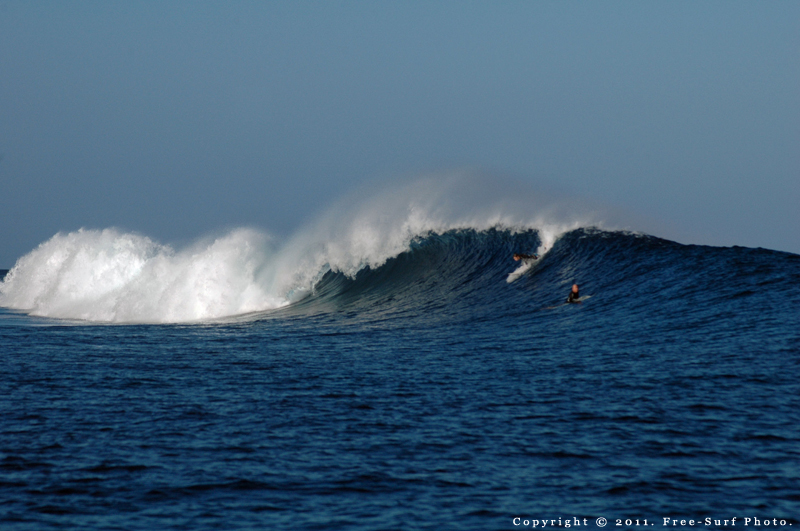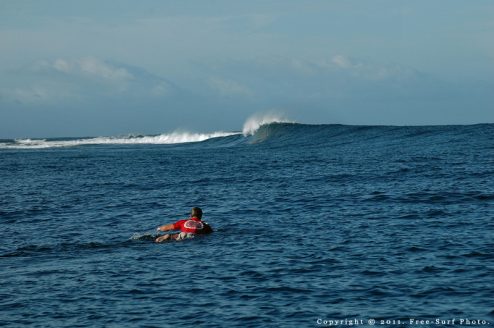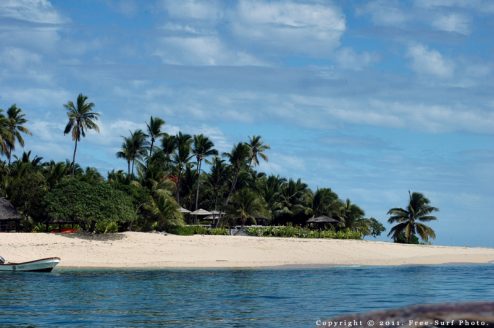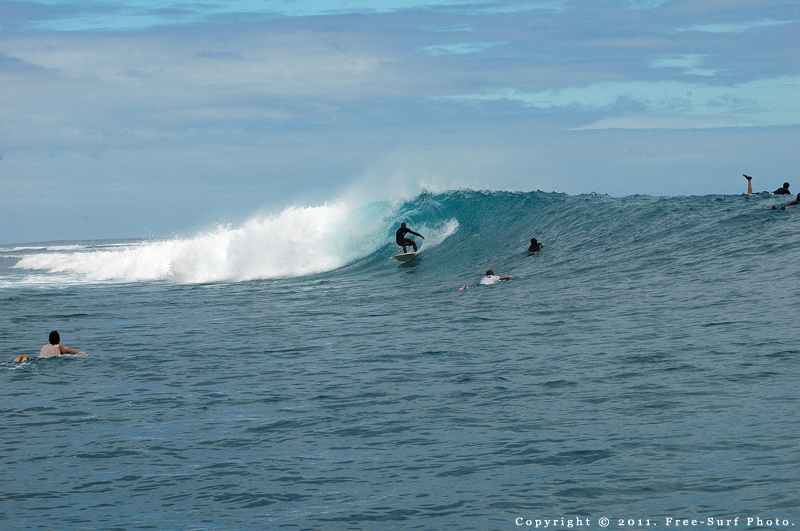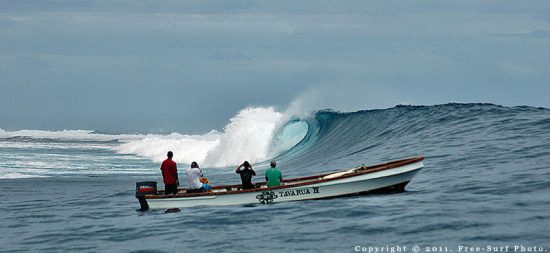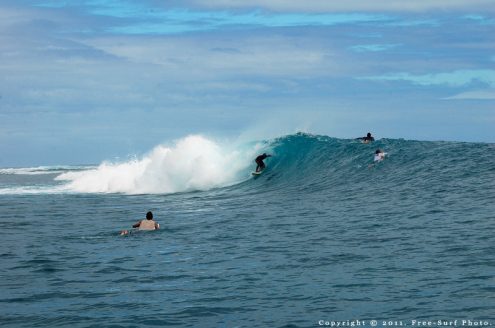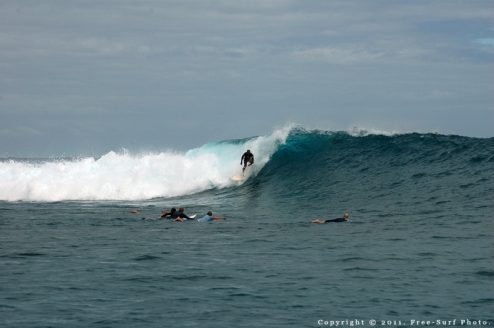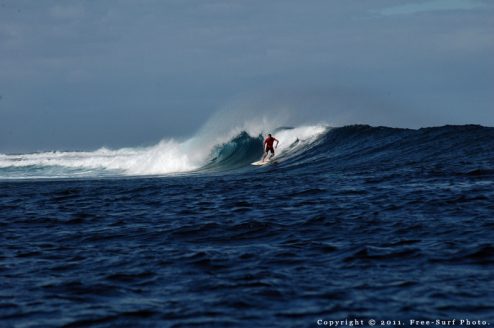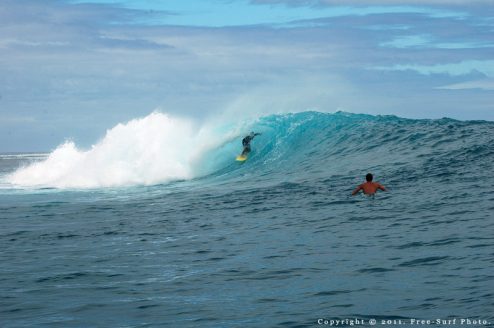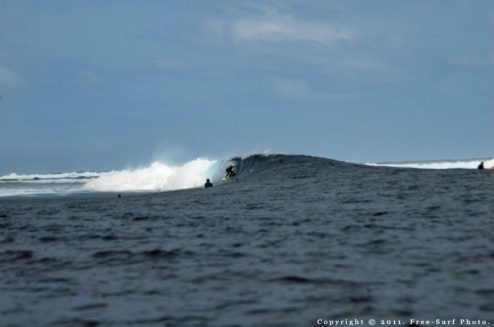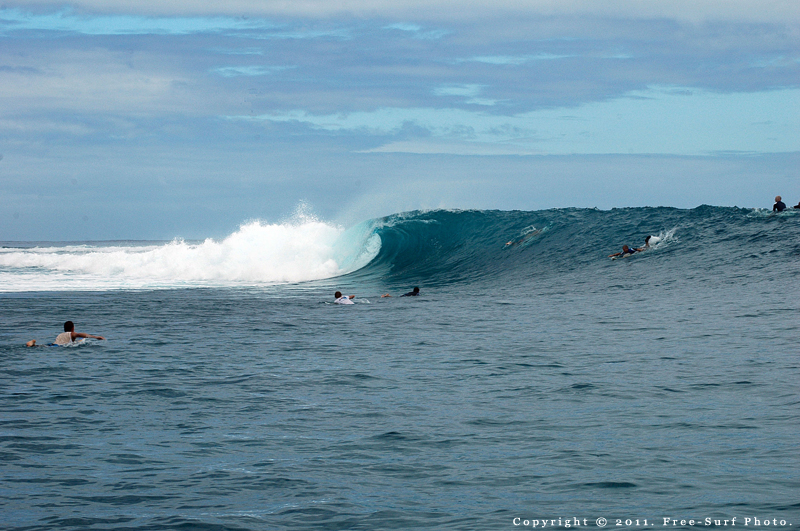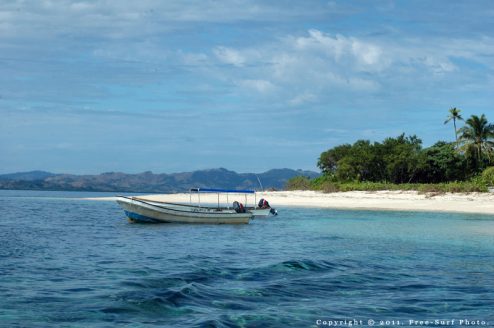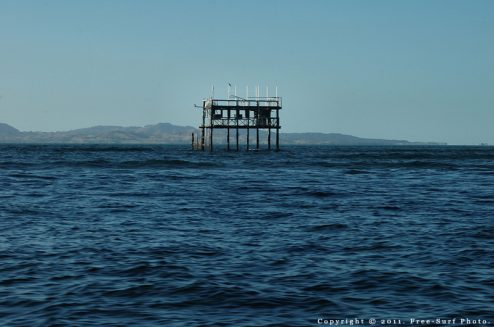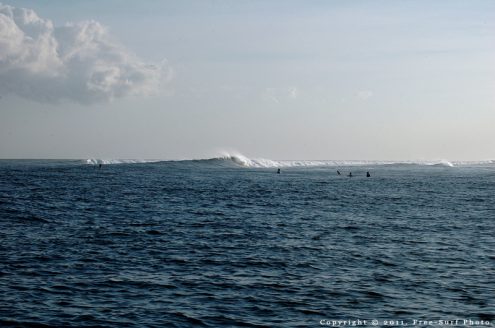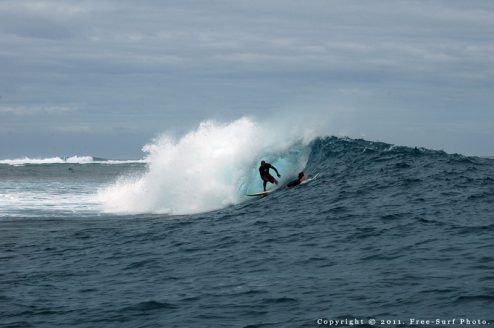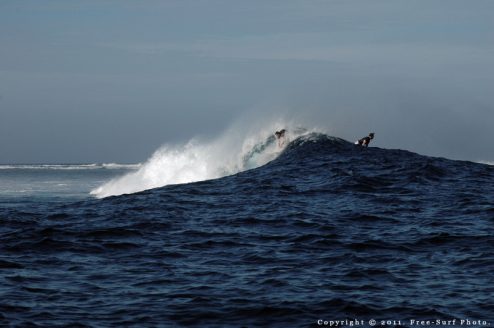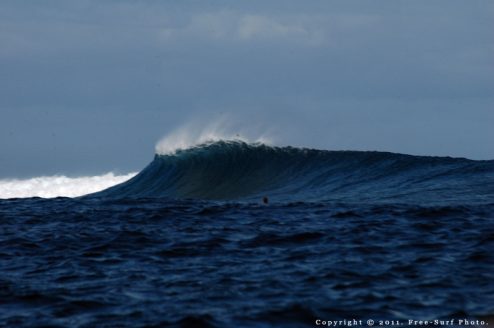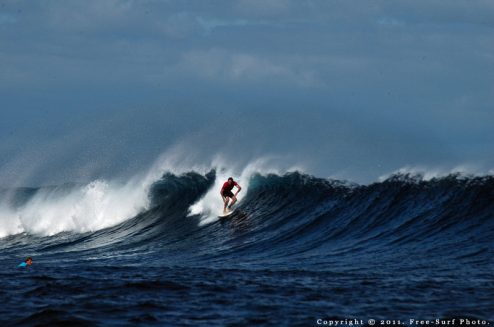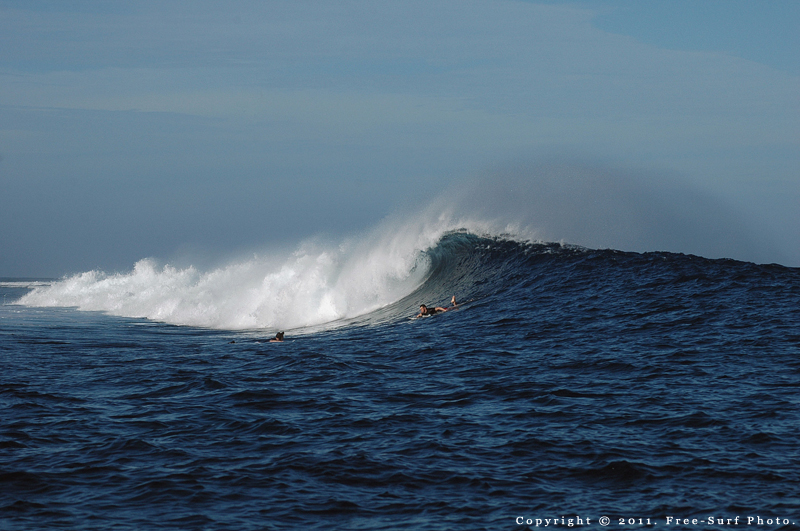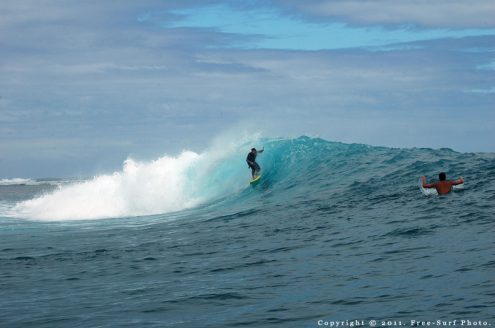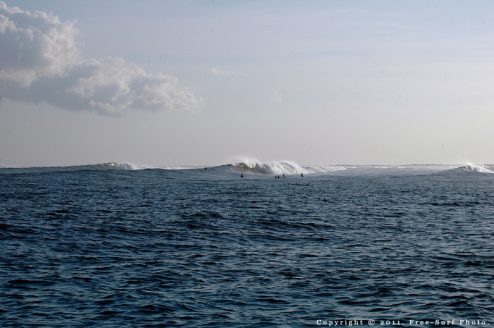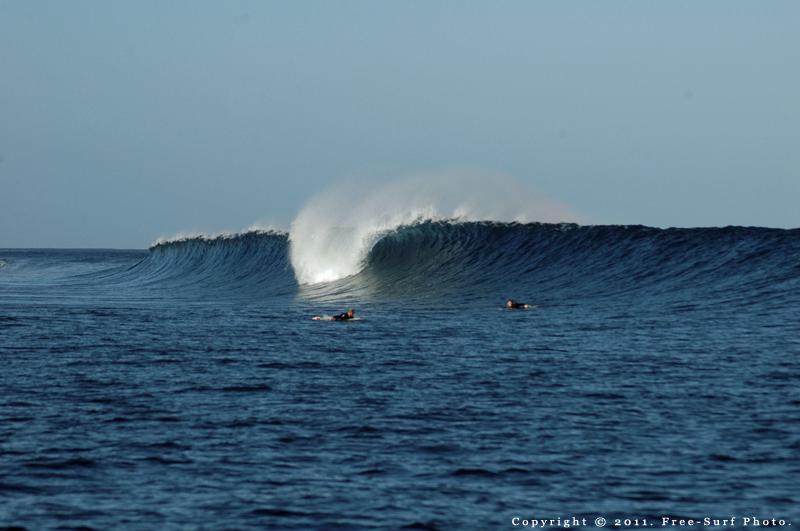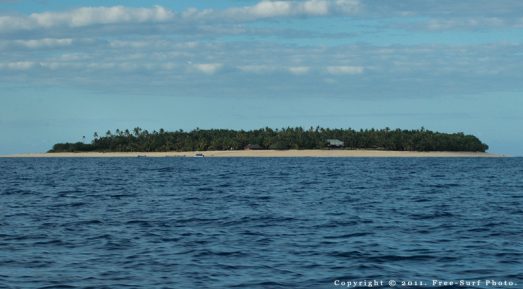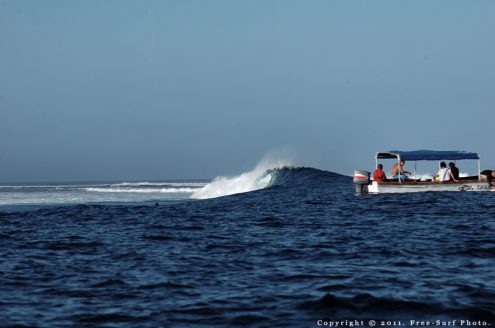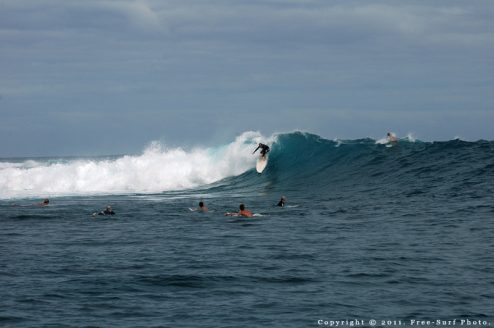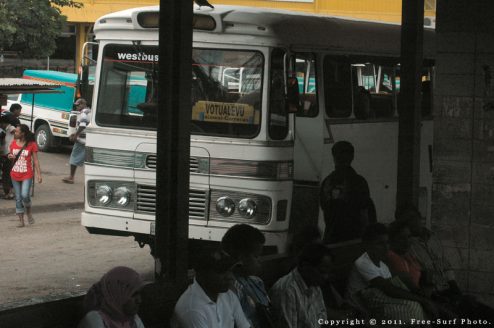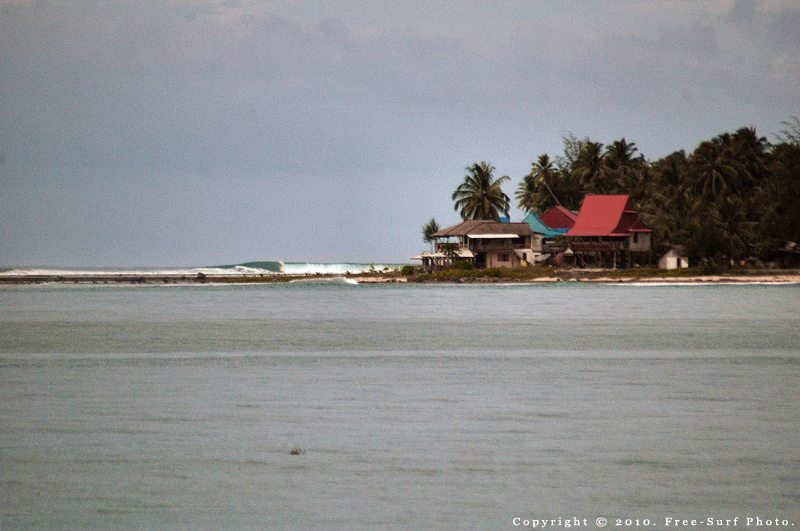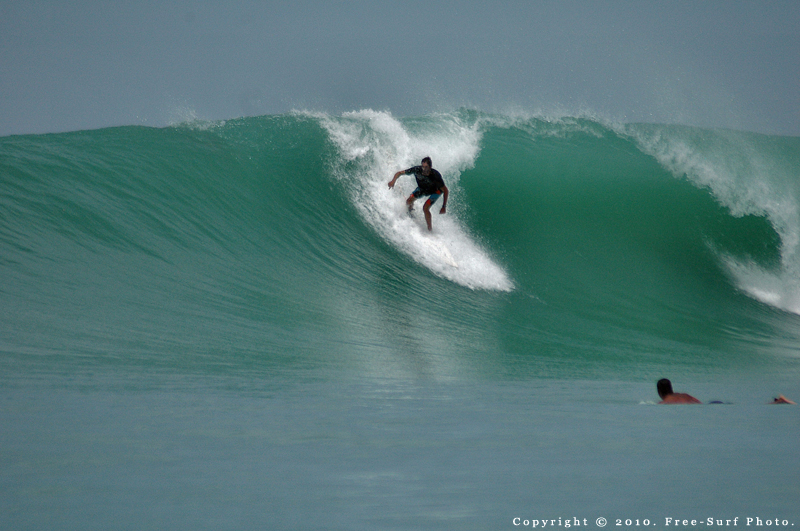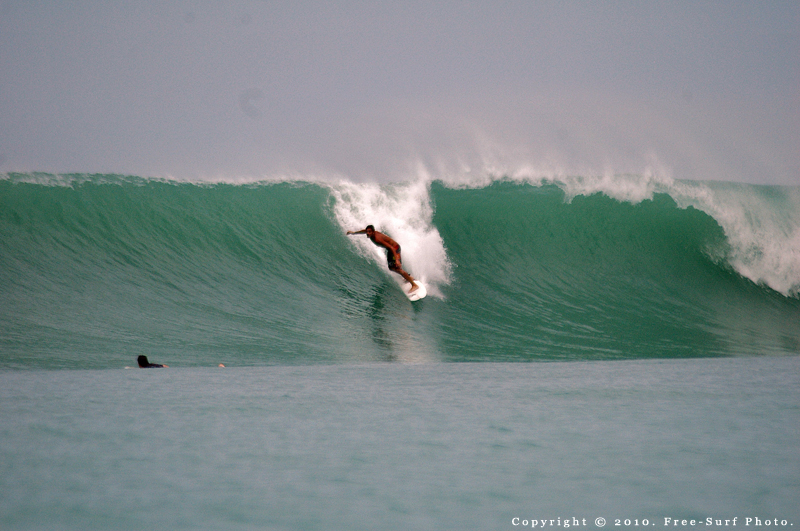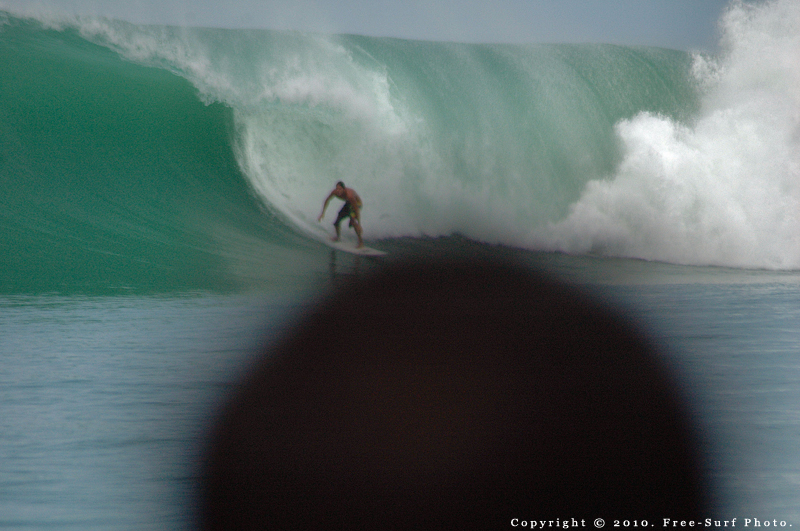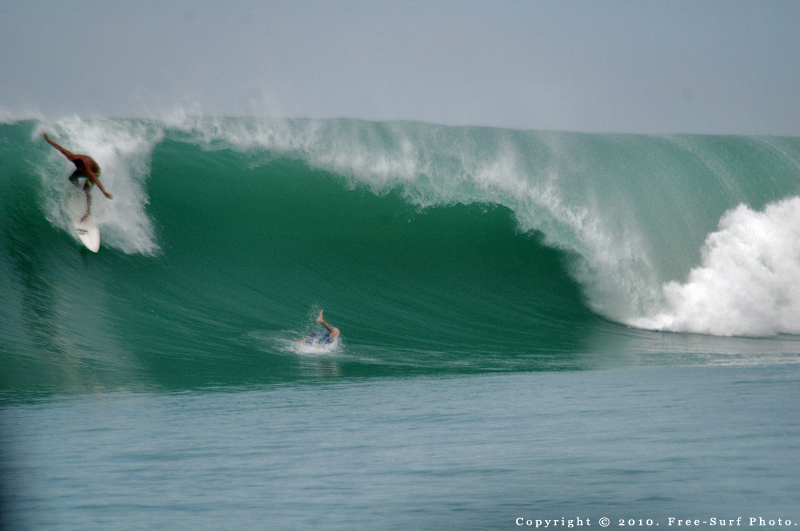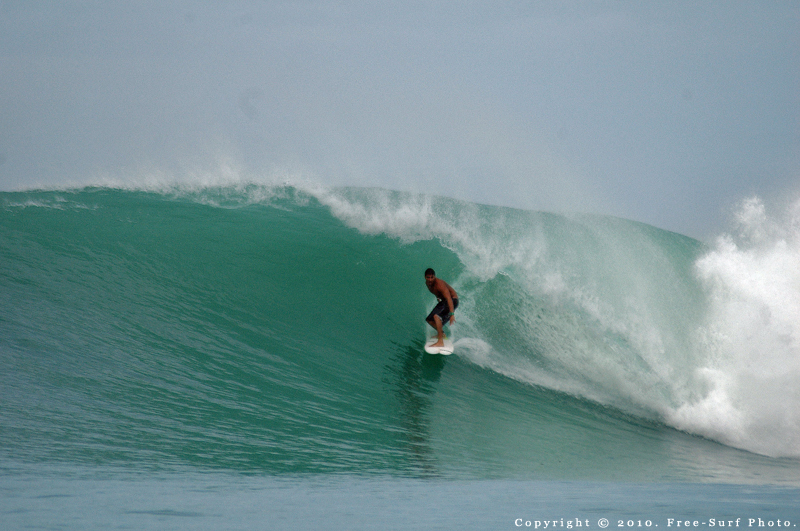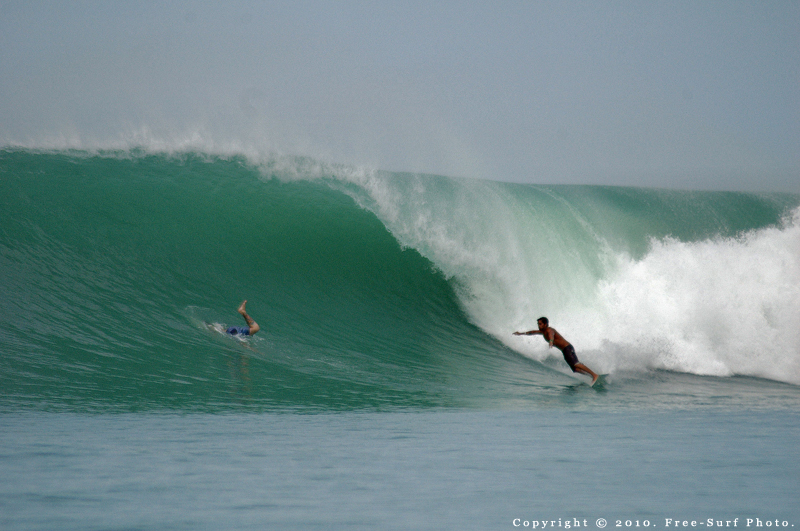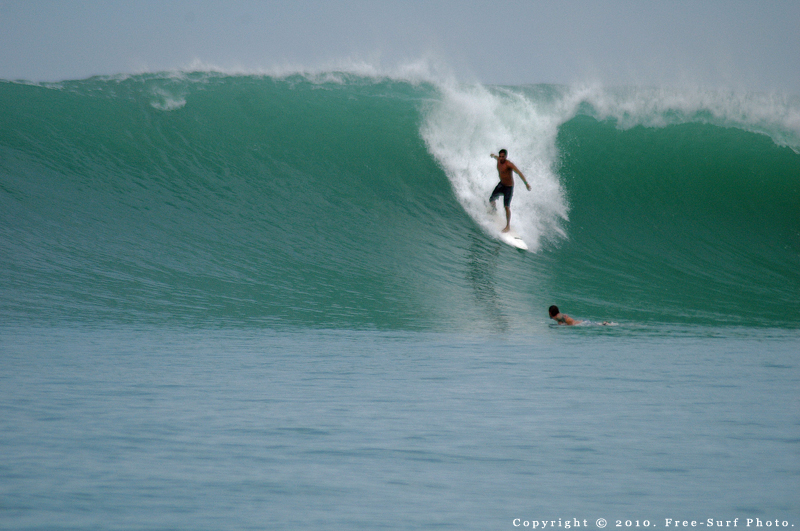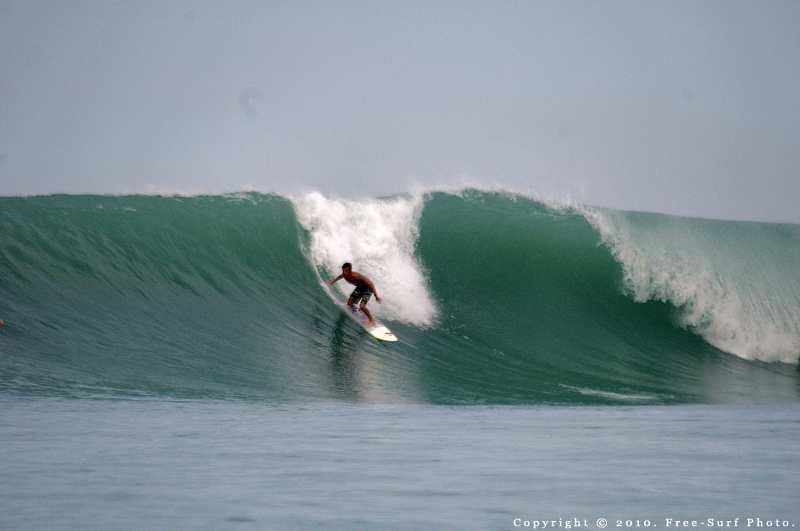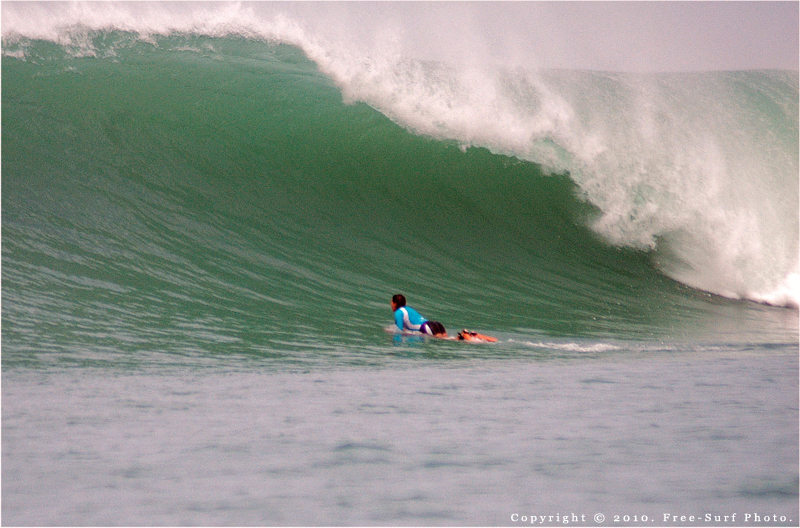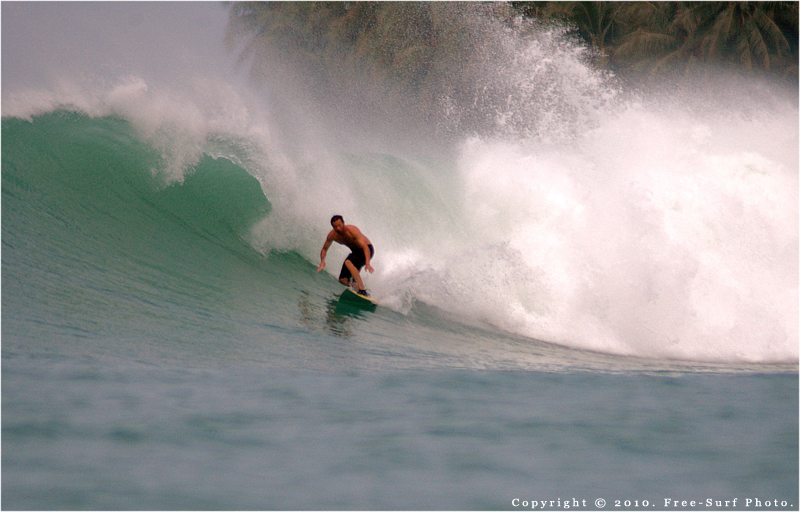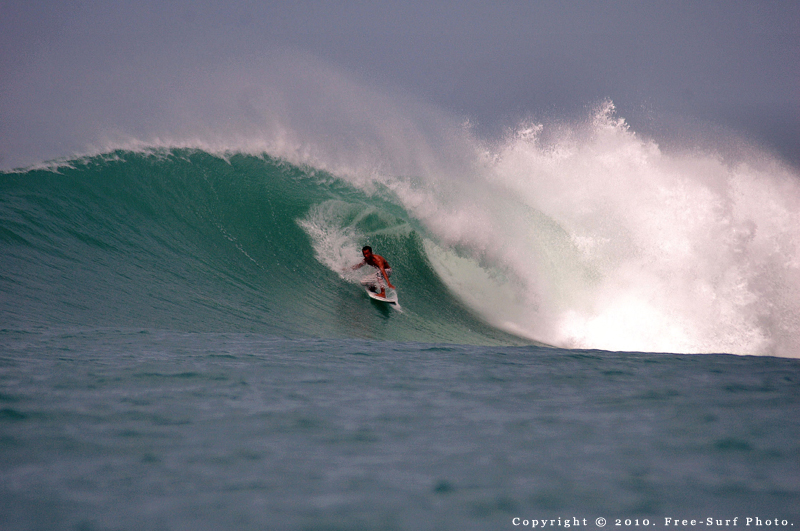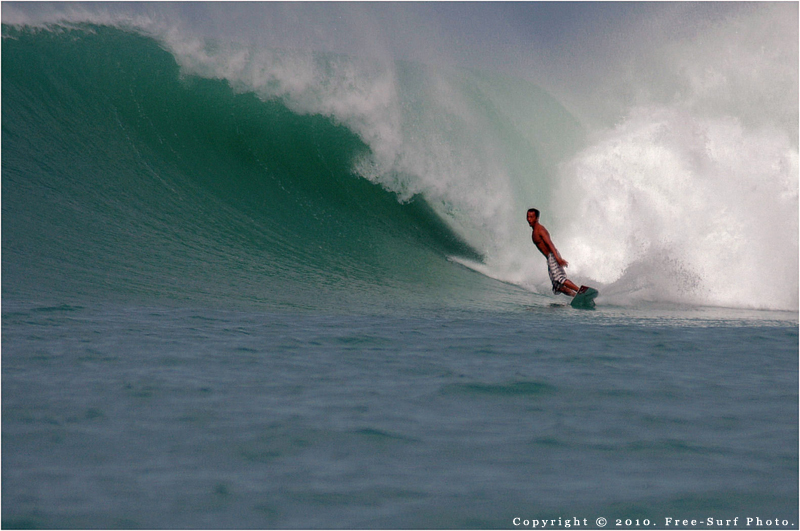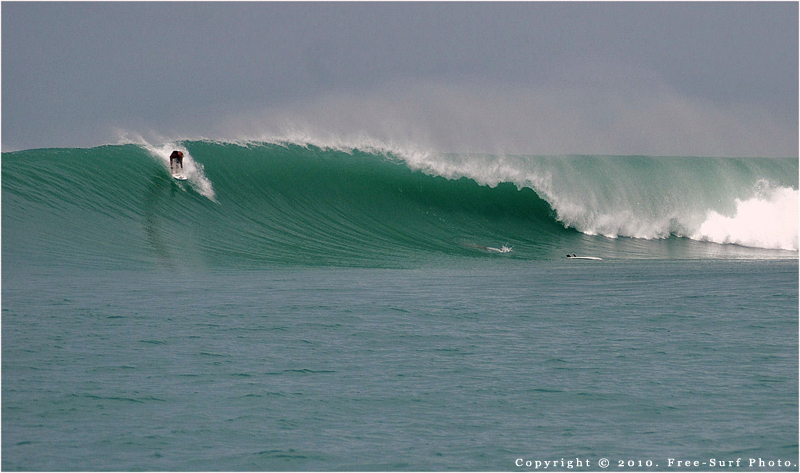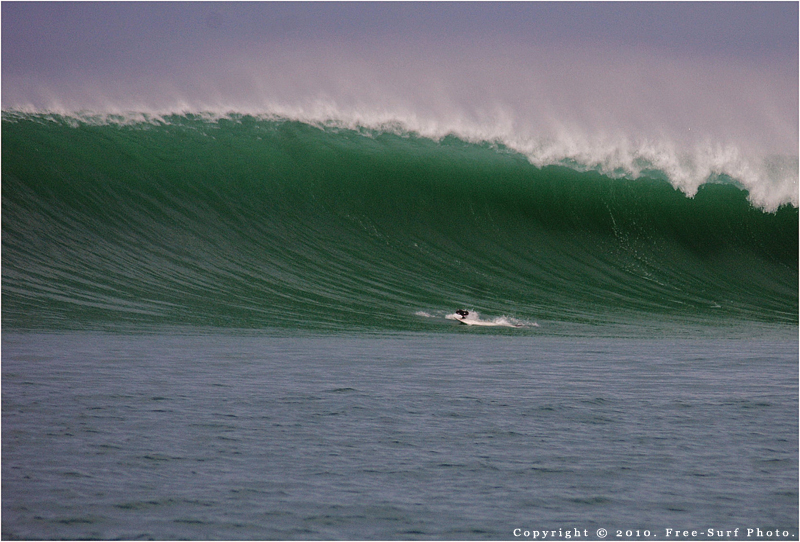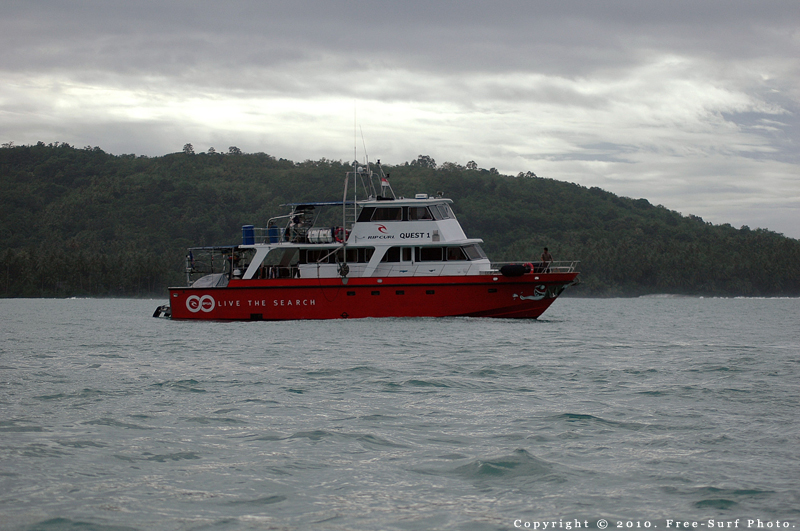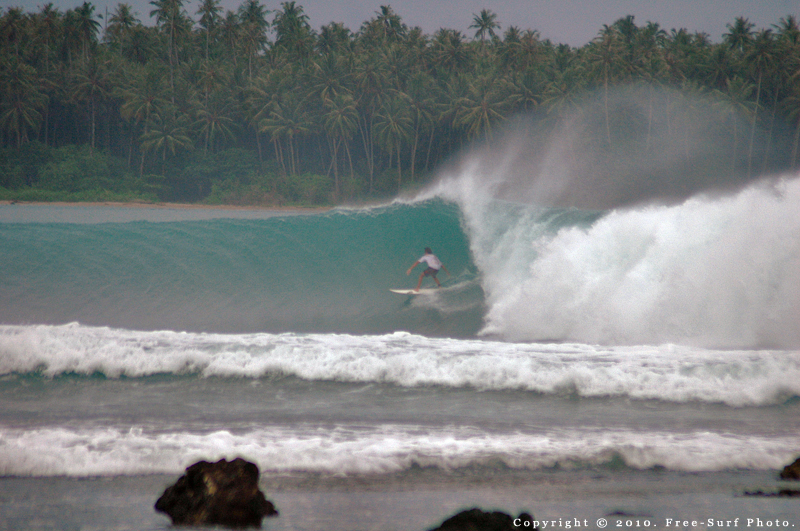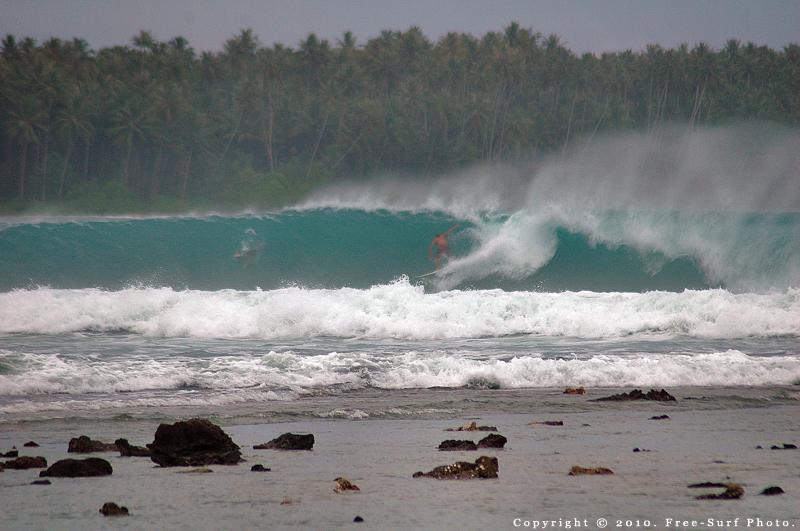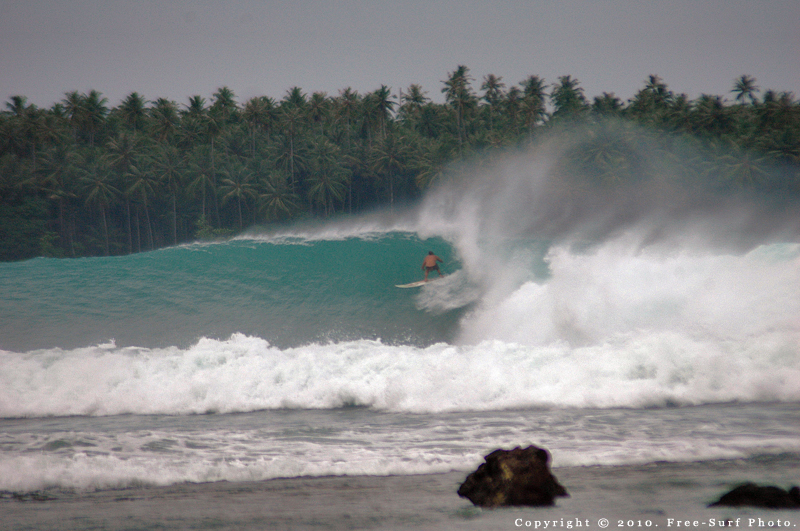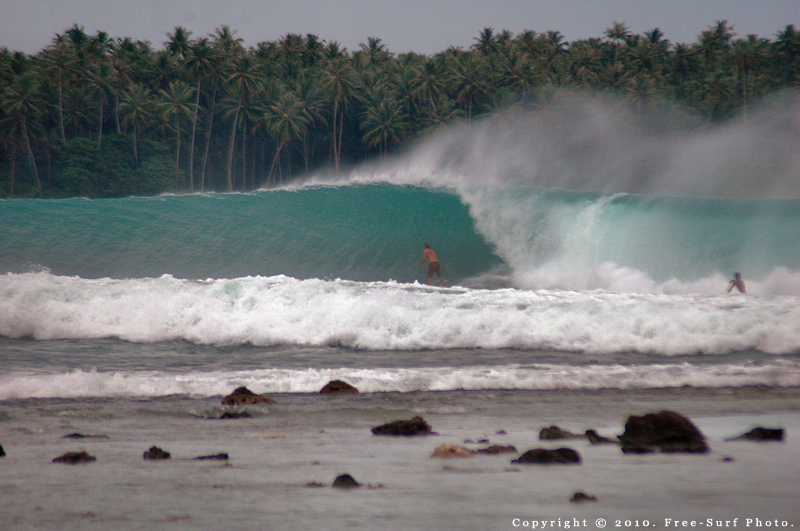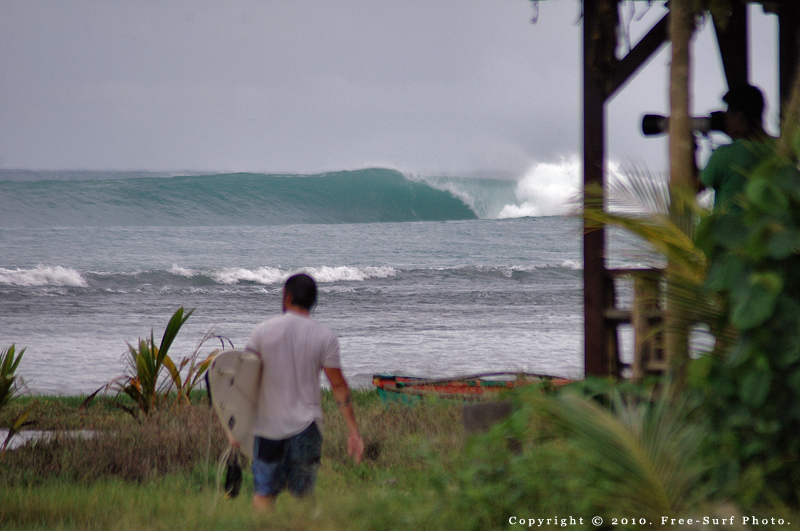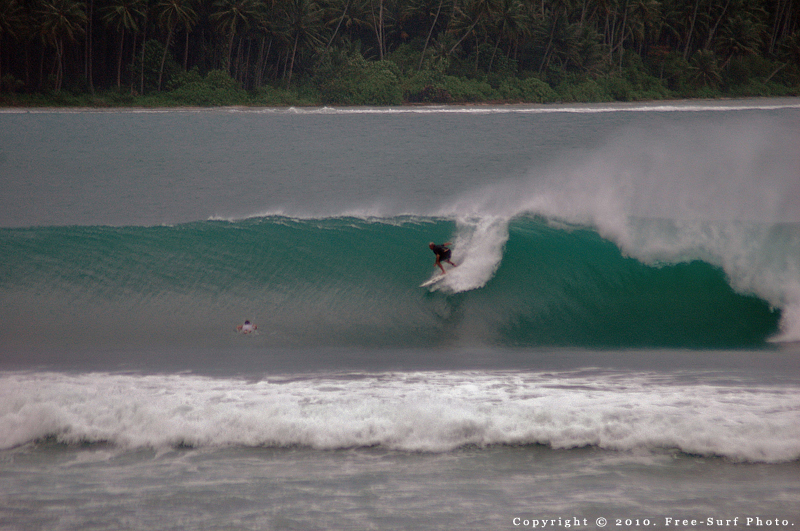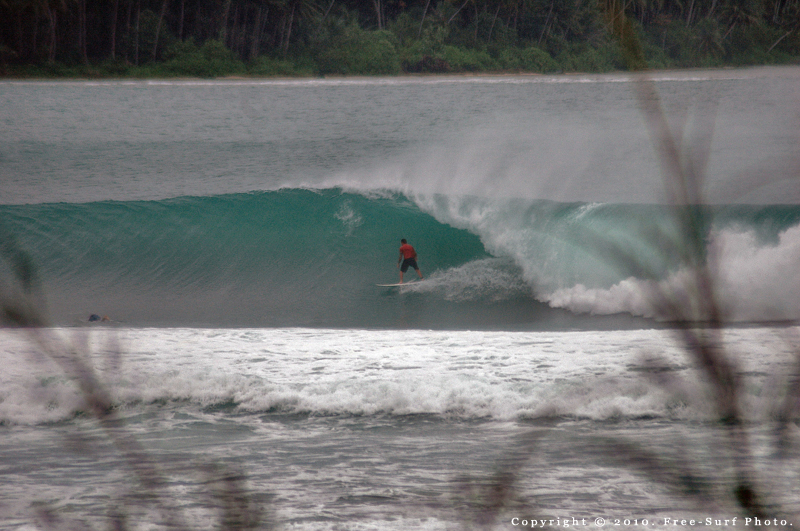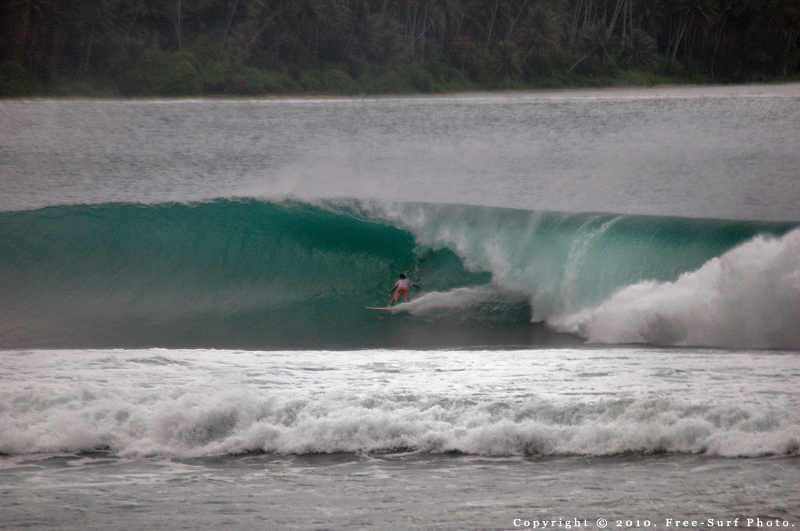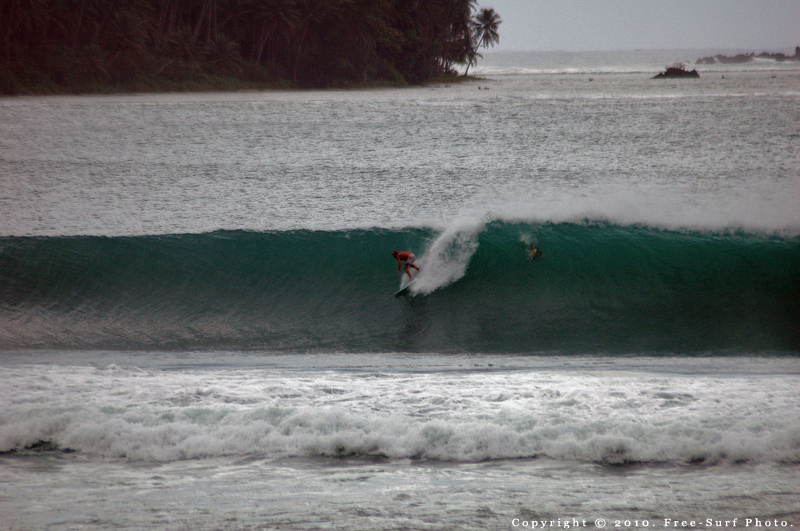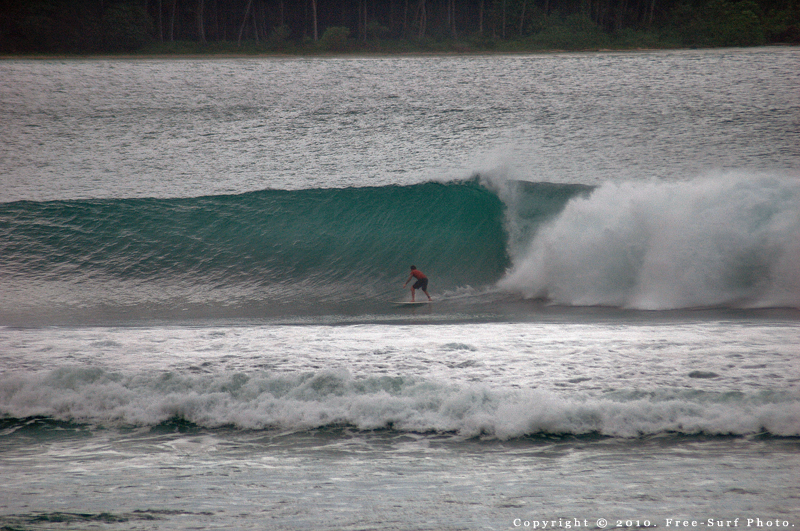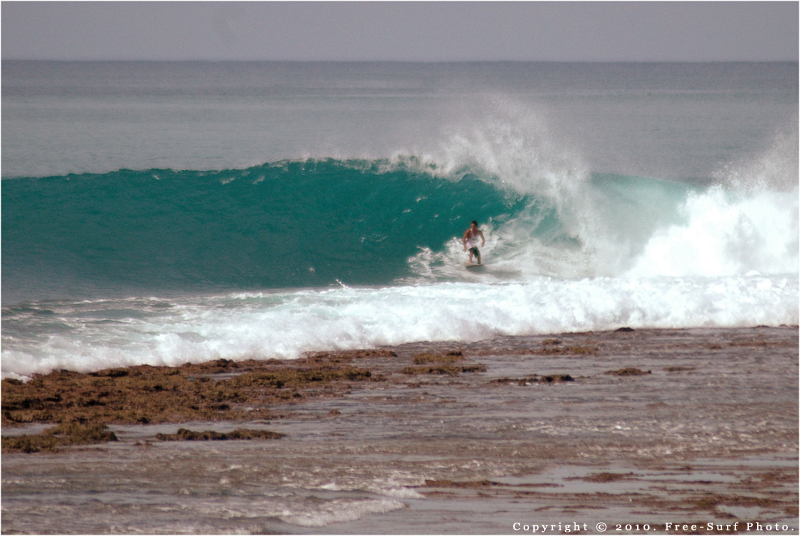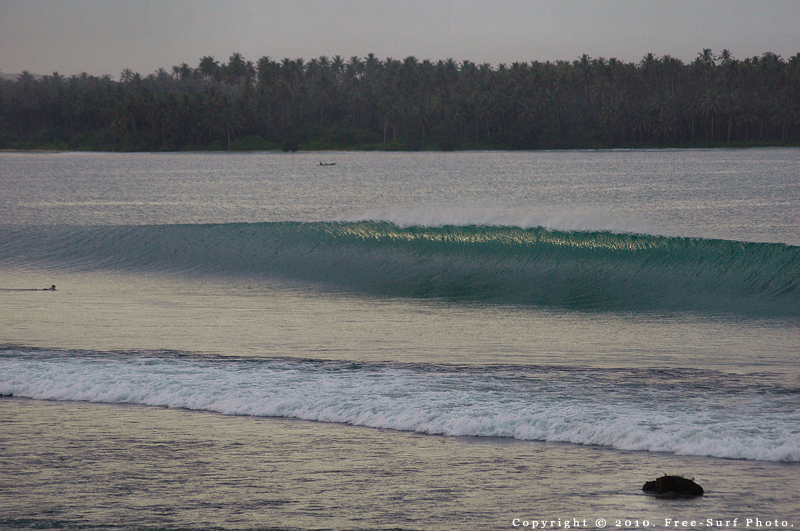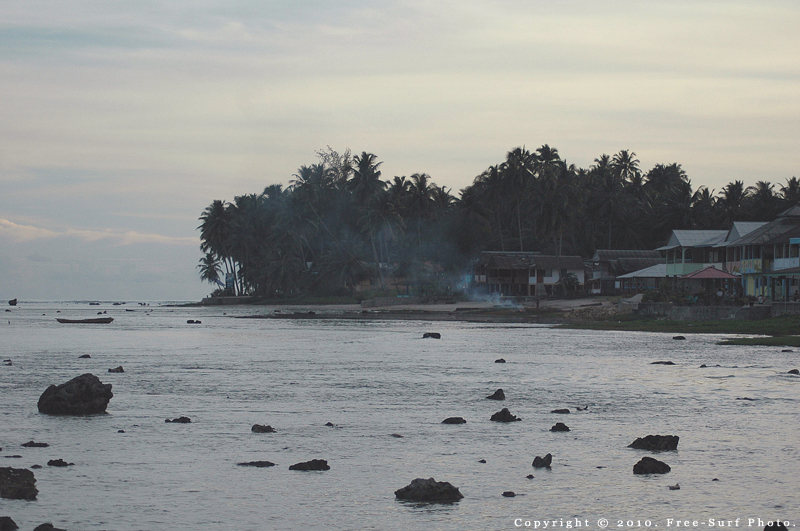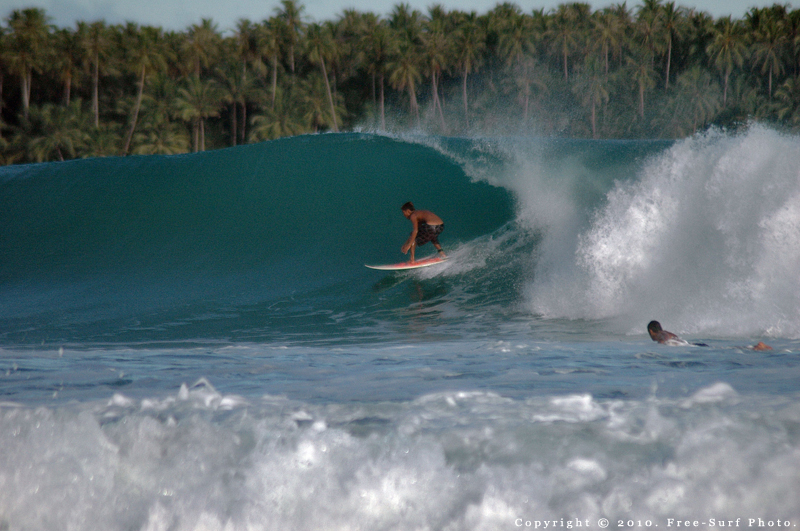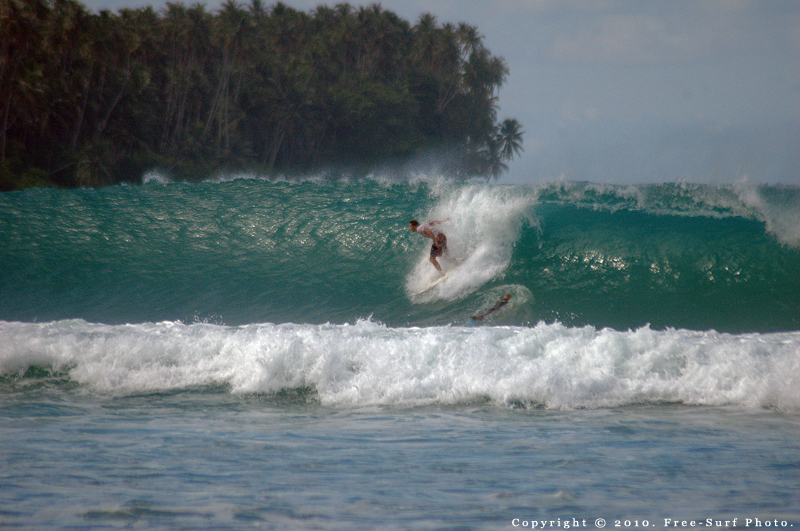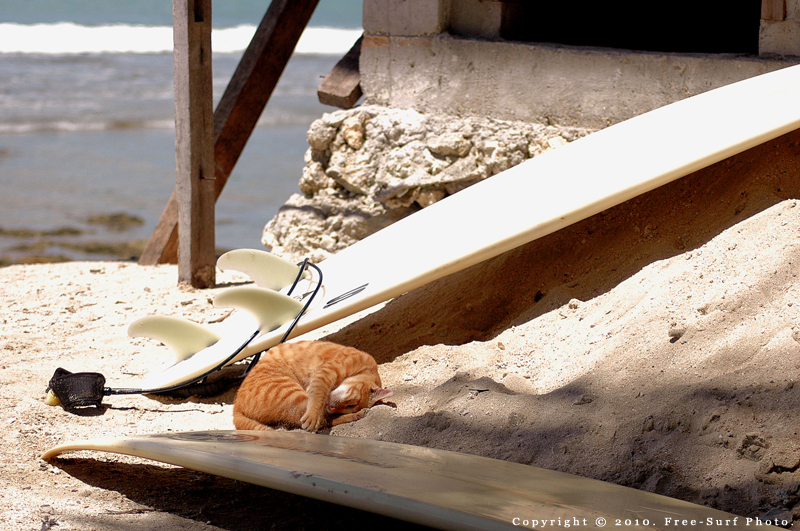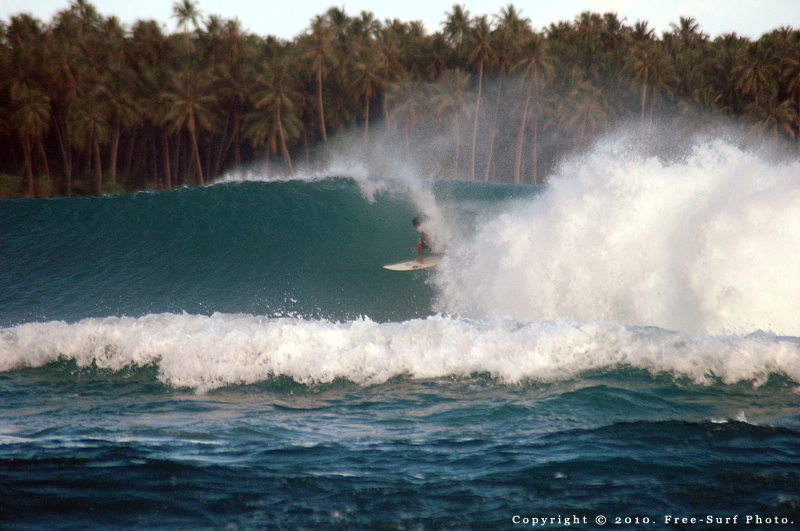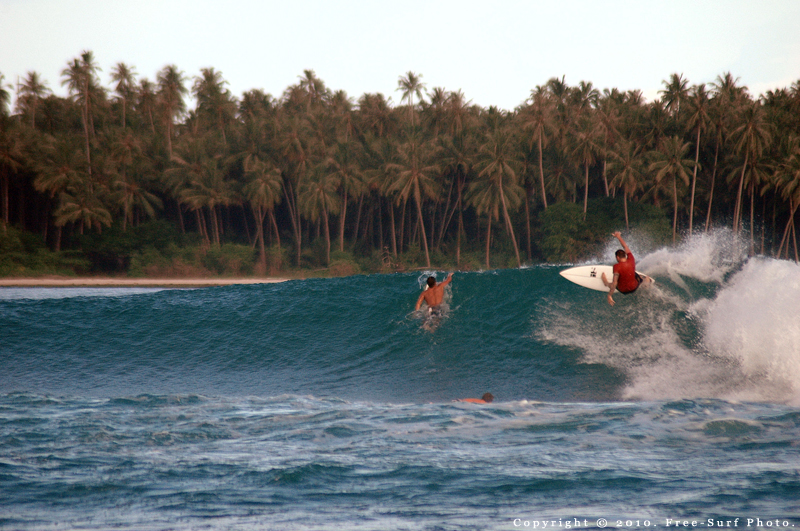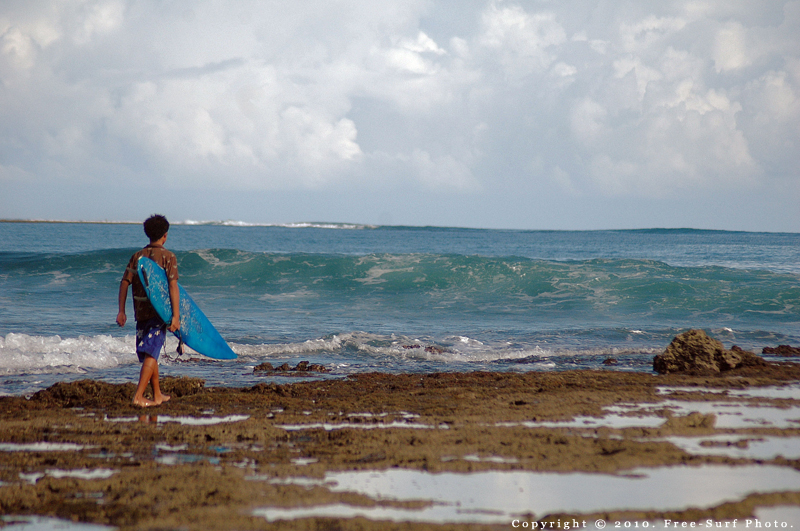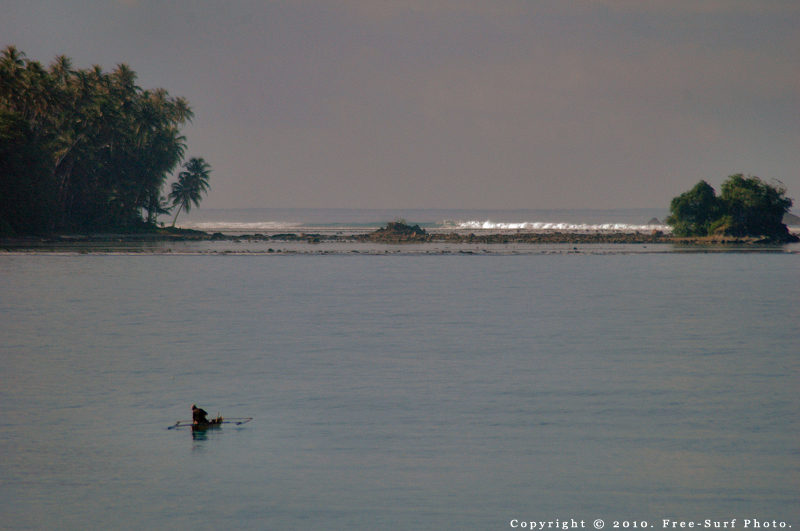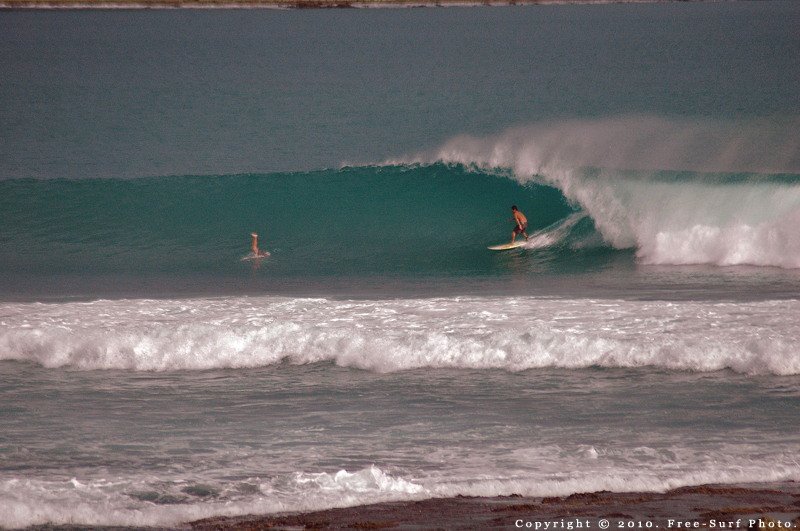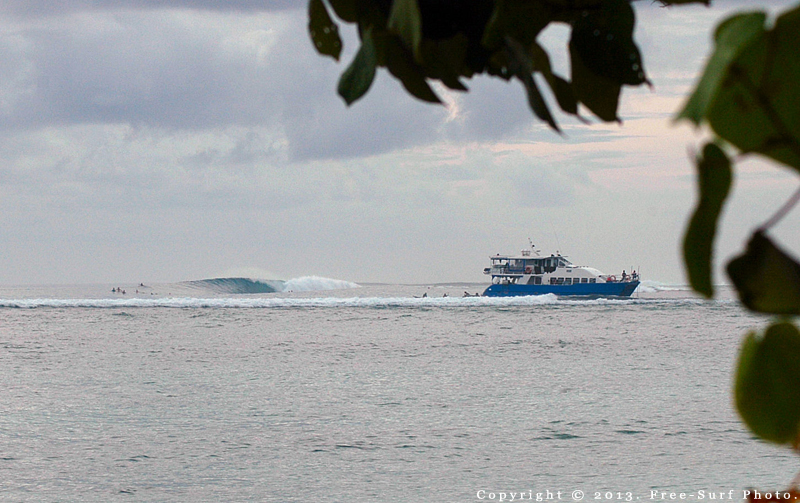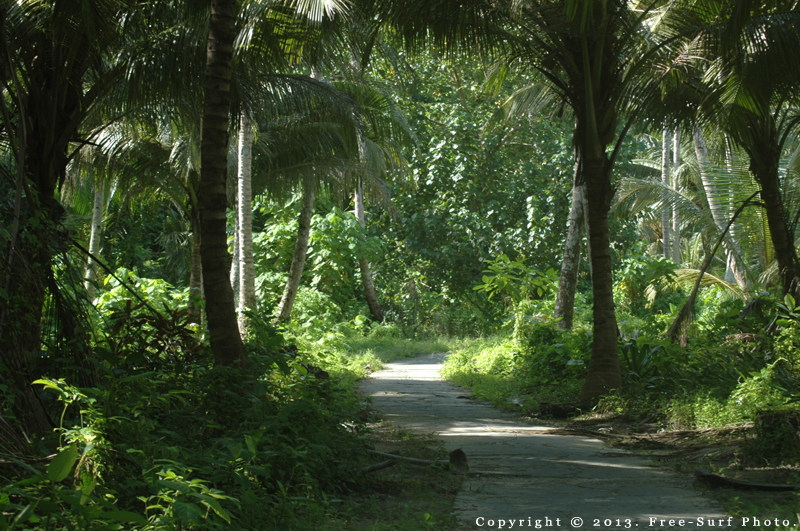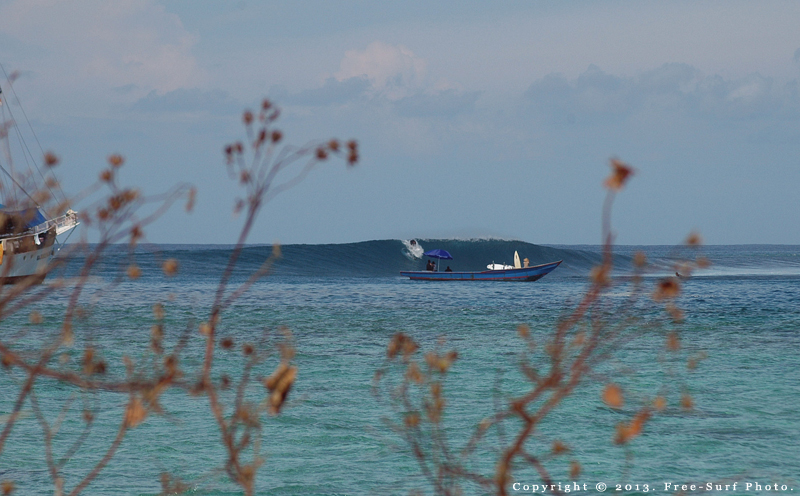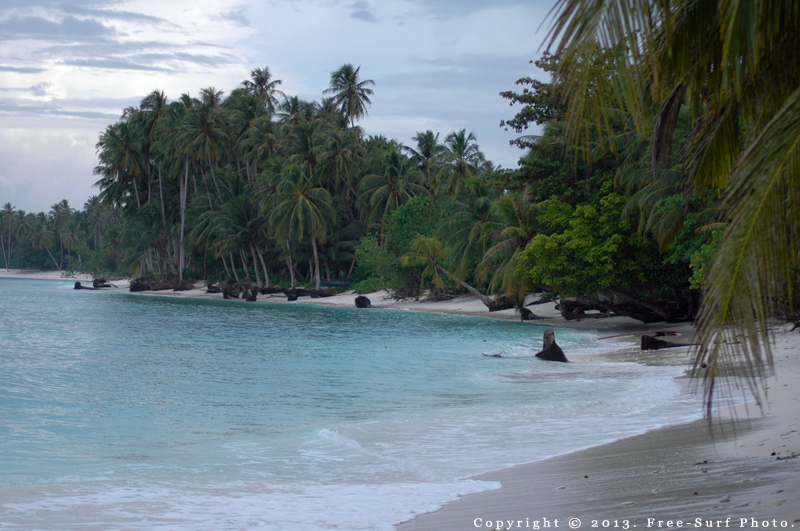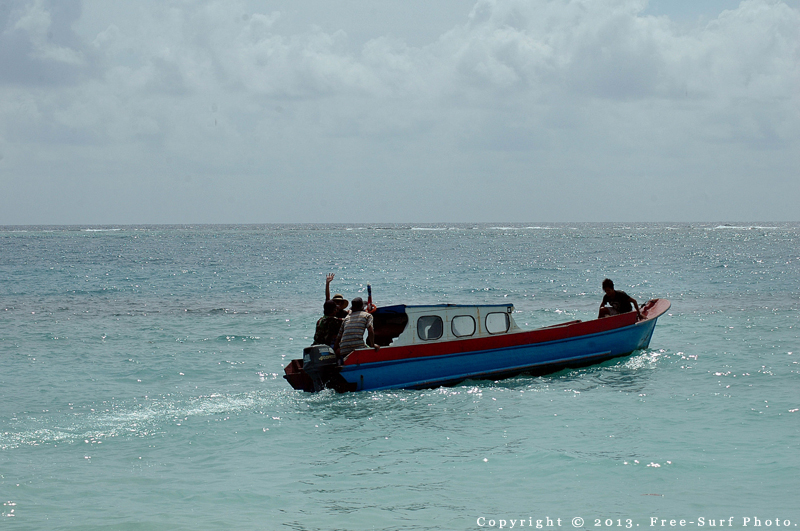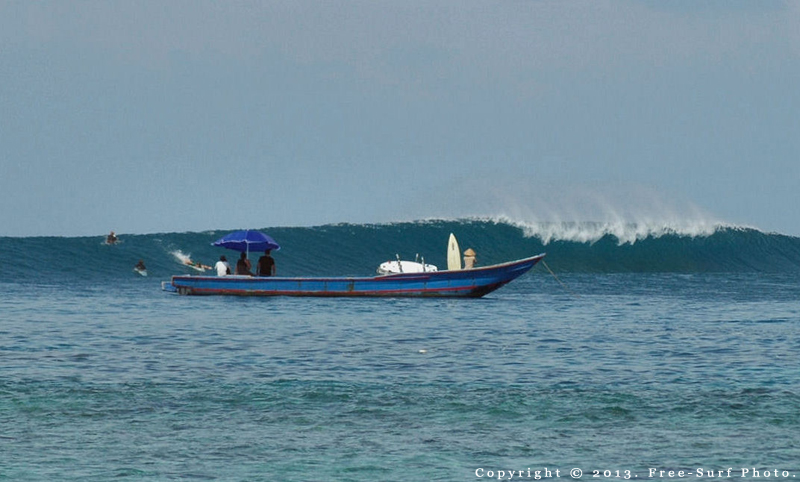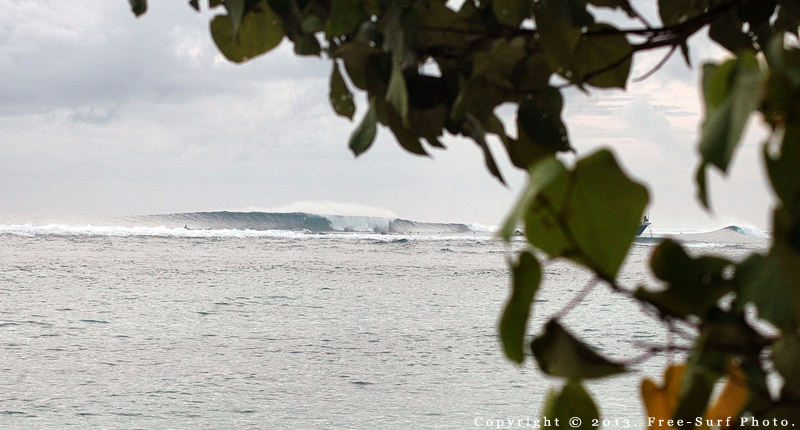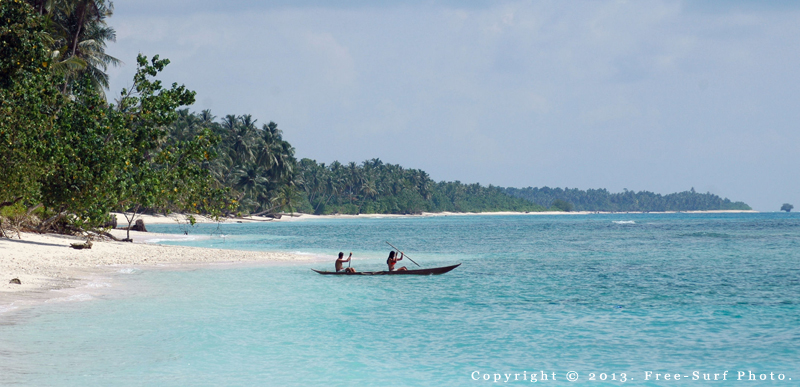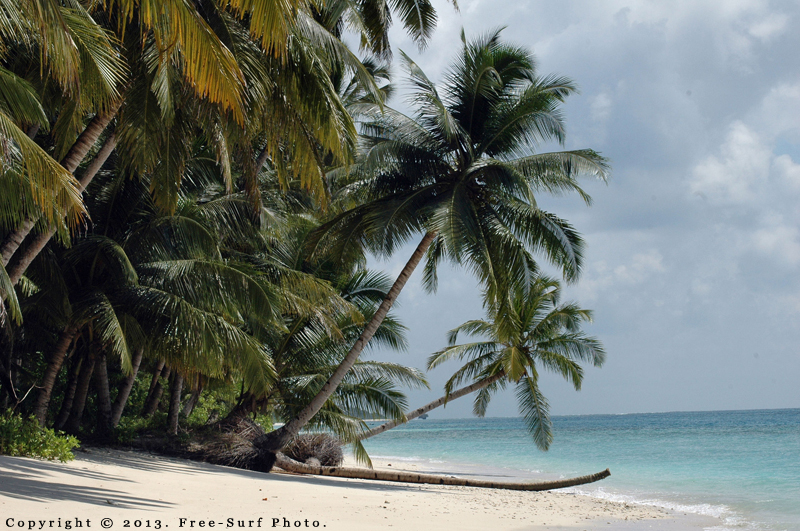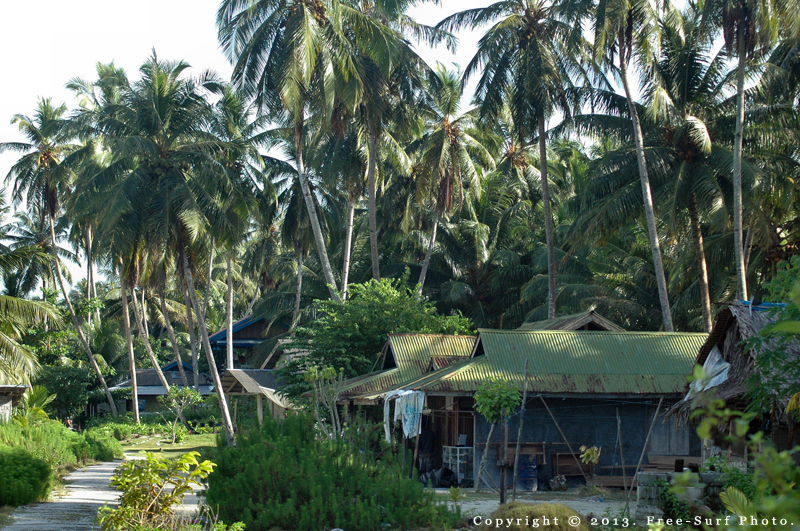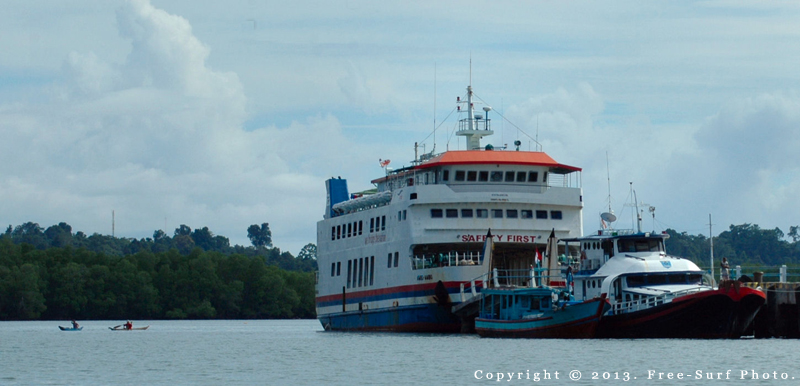Kind of blue
.
He who does not travel does not know the value of men. – Moorish proverb
This place is a pretty remote part of the bloody world.
I’ve been raised in such a tropical island ghetto which is probably why I like enduring the horrifying long travels to these far-off corners of the globe. There’s room for valuable insights here in the face of compulsive materialism and raging narcissism that have become the appalling standards of our modern living.
I knew that the counterpart of the expensive travel to reach this place was to keep on a budget stay meaning actually to share a dorm room in a cheap surf/dive resort. The trouble is I became tired of socializing with surfers a fucking while ago.
In theory the unique combination of skills that surfing demands in the close interplay with harsh elements should promote accomplished characters in the same way as for explorers, divers, climbers or whatever.
Beyond the horizon of appearances lies the horizon of disappearance. It turns out most surfers are mere caricatures of that, formatted with a shallow mindset and dopey lifestyle ideal proceeding from a purely superficial and fabricated image of sea, surf and fun fitting perfectly for the mindset of wealthy spoiled westerners. Indeed surf companies have sucked the soul out of the billion dollar business of this “surfer dreamlife”. Add years of corporate advertisement bulshit, extensive exposure too close of a television screen, alienation from reality which reflects by the great rock’n roll star fever on Facebook/Twitter/Youtube/Instagram… what else to expect from this crap?
With this background in mind it’s likely to end up tiresome after only a short period of time. So I was rather pleased on the first days to be by myself in this nearly empty resort isolated in the middle of nowhere.
Shortly after, a friendly guy from Kauai showed up in the dorm room. He was a longstanding surfer but did not really come here for the waves. The long story was that he went to these islands a long time ago and had been one of the very early guys who uncovered and surfed a spot that had since been considered one of the best waves on the planet. Needless to say he surfed it a lot and there was not a soul in sight at the time.
He liked the place to the point of marrying a native girl and buying land with a ridiculous view on the offshore barrier reef where the wave breaks. The dream of a lifetime for a surfer. But at this point ongoing instability eventually led the country to invite him to leave. It was only twenty seven years later that he came back to exercise his ownership of land and build a house with the help of local people in the nearby village.
Today I’m a guest for lunch with a family helping to build his house.
There is a longstanding tradition in their culture for special occasions, so we’re going to chill out for hours of drinking, storytelling and socializing.
Local people never cease to surprise me. They are valuable persons which express their feelings and emotion through natural, unelaborated ways. The parents are rural characters living in a marginal house built of their own in a sparsely populated valley sheltered from the violent storms that can sweep the region. They have three teens, two girls and a boy who all finished school and have been working hard to help their family from well before reaching the age of majority. There is little employment outside from the hard labour of plantations. There’s no job prospect from inexistant higher education. Most people live in a precarious periphery, without an infrastructure, without basic sanitation, without almost anything. The islands suffered the consequences of severe political instability in the past leading to a deterioration in the social situation, so there’s a little hope for improvement from the upcoming democratic elections.
Those are the usual hardships afflicting the life of billions of people in the less advantaged world who, simply by virtue of being born somewhere, can never aspire to the secure life we live in comparison.
Life here is tough but it does have one advantage. Life is real.
There’s no point deluding ourselves about the shock of civilizations, in the face of west culture where fakery and self-interest pulverize reality at every corner.
While spending time with other guests in the resort, it’s striking to observe how well-off brats, the standard profile seen on the roads, fit stuck up superficial stereotypes in comparison. They are too pleased about themselves to be truly perceptive and respectful of others, starring in their own movie and navel-gazing with the self-delusion of blurring the void of their existential bulshit. It doesn’t take much time to uncover the dirt. Look beneath the façade of seamless well-adjustment and what you often find are toxic levels of ego, inabilty and lack of self confidence to face reality, flaws in the personality sometimes until sheer excessiveness and borderline situations.
It’s the outmost feature of narcissistic characters to show an unlimited sense of disrespect for the others and the ways in which they do things, of superficial individualities to deal with an obsessive “looking cool” disorder, of inflated western ladies to push the limits of shallow insipidness, of arrogant caricatures to reflect poor personal standards and lack of true life experience. It’s actually in the far end of Switzerland in a famous elite academy full of entitled little shits that I have learned the most about this prodigious discovery, but that’s another story. Experience teaches that the theory can be easily generalized on a large scale.
“Character is like a tree and reputation like its shadow. The shadow is what we think of it; the tree is the real thing.” – Abraham Lincoln
Too bad so much people have lost the real thing.
But why should we care about the problems of so many fucking idiots?
As I sat exhausted from a few hours in solid surf sleepily watching those big lefts peeling down the reef like freight trains, time had also come for me to face some truth. After all these years I still suck at surfing.
This time of year is at the peak of the swell season. Travelling so hard to some of the best waves in the world is with the little idea to push some limits in mind. I was about to be well served.
Massive swells hit the islands consistently, waves rarely fall under the six foot range at 15 to 20 seconds period. Wave power is proportional to the wave energy period and in major storms, the largest waves offshore have a period of about 15 seconds. There are not so many places in the world holding this energy.
But surfing big is a tough stepwise process. When the shit goes down, you’d better be ready. I humbly declined what I would set to a really big day on my personal scale.
A few days later, the stormy Southern Ocean machine delivers a smaller ten foot swell. The spot is slowly clearing up because massive double size sets fills in every now and then, coming out of nowhere. After watching a moment from the boat I decide to paddle out.
It is usually one thing to estimate the size of the waves from a distance and a different story from close sea-level perspective. I have already surfed waves that size but it didn’t come close to this power. In their march towards the reef, faces are slowly extending vertically nearly limitless, preceding a ton of water, then loosing one fraction of the size as they folder projecting everything far ahead in a huge amount of energy. It’s all about an absolute drop into the pit and hitting the gas straight from inside endlessly expanding caverns across a distance that can exceed 300 meters. There’s no time to bottom turn. Being too slow or finding yourself in front of an exploding section is not an option. Being caught by an outside double up set neither.
I have to admit that I’ve been shitting my pants on a couple of waves. I’ll give an arm to surf the same shit frontside.
Everyone in the crew is regular (surfing their back facing this wave) and a bit of frustration starts to emerge from surfing exclusively big lefts for quite some time.
There’s actually a world class righthander at a nearby reef pass but it has been blown out with the incessant succession of depressions. Finally the windless day long awaited ended up happening and we all agreed for the extra boat ride to check it out.
Outcome of the operation: perfect barrels, six guys out. Muy bueno.
The bowl starts on a shallow piece of sharp reef where the wave is too fast, so it’s better to take off a little bit inside. However it’s a kind of a free fall take off to find yourself directly racing a long and super fast barrel. It took a few wipeouts to understand the process when I finally spotted this perfect looking set from a distance gradually moving towards my direction. Being the very early one paddling in the pack, there was my name on the first wave.
I remember having often noticed the singular nature of the flow of events from this precise moment: there’s no room for thinking anymore, everything goes mechanical from the instant we start paddling, we turn into crazy machines.
The sea starts opening wide just below my board making the reef visible underneath as I’m still paddling hard like if it was to save my life. I quickly angle my board to avoid end up projected and peeled off like a snake skin on the coral. Micro bottom turn. Heavy kick in the ass quickly followed by a detonating load of water chasing me on my left side. An hypnotic crystal blue wall is endlessly arching at an insane speed ahead of me.
The show is unreal. I can remember now what I came here for.
Pumping conditions right at the end is the best possible finish for a trip. After a few weeks it’s easier to leave when forecasts let no hope for another good swell anytime soon.
Jumping off the boat back from a last perfect session, just enough time to pack my boards before heading to the airport, at least I can leave satiated with no fear of missing too much of this perfection.
Because what awaits now might be less fun. Four days straight of air travel madness to get back home.
Welcome back to the real.
On Nihilism
Indian winter
Dirk, Petra, Ruth, Qumaira, Stéphanie, Tini, Ulla, continuous flow of deep lows over the North Atlantic these days has finally set up a week of swell in the med. You can also score great waves here, like anywhere else, tracking the swell where it goes. There’s usually a lot of driving involved and a bit of luck as well. Nothing worthwhile ever comes easy.
Normally, we do trips to tropical places, this one was a surf trip at home: long road ahead, heat, sun and pumping waves, all this in the midst of the indian med winter.
Archives: Fiji
Fiji is a fairly unique place in the world: great singular nature scenery, spectacular beaches, friendly and helpful people with true open and sharing culture, and of course the dream place of powerful waves right in the middle of the South Pacific.
In July 2010, the Fijian government decided to open access to every wave in the islands. This meant in particular that anyone could surf Cloudbreak and Restaurants, two of the most famous waves in the world, until then exclusively restricted to the guests of Tavarua island resort for as little as 500USD per person per night. Shortly after what has been called the “Surfing Decree”, I ended up booking all flight tickets to go there while staying in a very cheap place. Followed one month on a trip by myself in august at the peak of the South Pacific swell season.
Cleopatra
Hard to be excited about the last days of swell while many people are affected by the aftermath of “cyclone Cleopatra” which has severely hit the island of Sardinia last week. High water temperatures in the Mediterranean sea have created the conditions for a low pressure system to take up enough energy and organize itself into an extratropical storm. This combined with a slow moving center produced extreme rainfall over a localized area. The equivalent of six months of rain affected Sardinia in less than twenty four hours causing massive flooding, significant damage and the death of 16 people. Italy declared a state of emergency after what turns out to be one of the largest natural disasters over there.
However, this kind of storm is not unusual, even in the Mediterranean. Dramatic weather conditions happen each year especially in the fall/winter season. Meanwhile, a clean swell also pulsed a bit with fun uncrowded waves to enjoy somewhere.

Smoke on the water
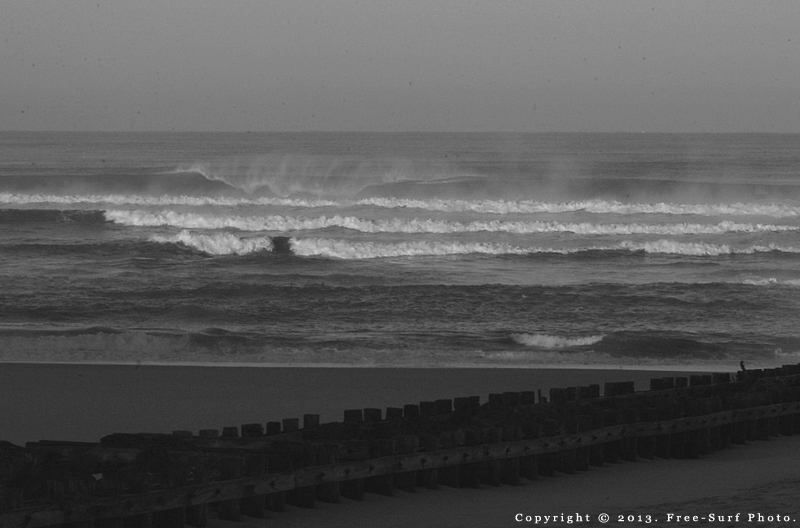
Anarchy in Sorake
– Nias island 2010 –
The calm before the storm?
The 2013 Atlantic hurricane season, which forecasters had predicted would be a very active season with six to nine hurricanes, turns out to be one of the calmest on record. Although the number of storms is above average, their intensity hasn’t matched the forecasts. September is generally the most active month of the hurricane season, with the average peak in activity occurring on September 10. The season to date has produced nine named storms of which two have become hurricanes. So far, there has been no major hurricanes of Category 3 or greater. Some experts assume this could be due to a lot of dust and dry air blowing off the Sahara, bringing unfavorable conditions for nascent storms to organize.
Late starts are not unusual. Last year, the season was an average one until when Sandy became a Category 3 hurricane that wrecked the U.S. shores around Halloween. So is it sort of the calm before the storm, or an objection to those theories on global warming causing extreme weather?
What is sure is that we’re still far from confident knowledge in climate physics and prediction. Meanwhile there has been a few days of decent swell lately, but that’s a little below September standards of consistency.
Insights from a remote island village
Another disaster in the news today: a ferry caught fire after one of the passengers dropped negligently a cigarette in a trash, 6 dead, 7 missing. Two days later, another one capsized from the impact of a large wave, four people were confirmed killed. The number of ferry accidents due to rough seas, overcrowding, poor maintenance, lack of safety or negligence, is scary over there. Our boat rather looks in good condition. On its front stands “safety first” in capital letters, but it rather sounds like a cheap attempt to restore a measure of trust. As we are in the process of being loaded with goods and people, time is long waiting for the overnight crossing to begin. A couple of Portuguese and I seem the only orang barat (westerners) on the boat, so we naturally start killing time talking and getting to know each other. It is their first travel to the islands and I try my best to describe the wilderness and beauty of this place, as far as I can remember from my first trip ten years ago. As the boat is always crowded, finding and keeping a place for the night is a gambling game. There is no rule, bodies end up cramped together with baggage on the floor, you need to fight for mattresses. Evening falls slowly marking the end of a hot sunny day that at least should let us hope calm seas, albeit a long, uncomfortable time till our promise land of perfect surf. Paradise looks a long way off in the experience of pragmatic reality.
I happen to negotiate a not so bad sleep having found a tiny space to lie down and rest on the upper deck. We finally arrive at dawn to our port of destination in the capital of the island, warmly welcomed by the local boatman in its funny, hard to get, casual English. We come to understand that five other people are surfing in the nearby area and we have to pick them up before leaving for the remote village which is the real purpose of the trip. When we find them some time later, they are surfing a picturesque left breaking half a mile off the coast. There is a couple from Canary Islands and three Australians that have been wild camping in the islands the last few days. One of them is a long time visitor and has a range of stories to share from the few months he has already spent there this season. His back is covered with mosquito bites, each the size of a bean. I don’t want to mess with mutants and resolve to buy more anti mosquito, in addition to the provision of cream, anti malaria pills and bug net I already have. After a long process of packing their stuff on the tiny longboat overloaded now with ten people, boards, bags and camping equipment in the middle of gasoline tanks, we leave two of them at the harbor and let them try their luck with the ferry back to mainland. It is finally time to move to the village. As dawn breaks a few hours later, we are coming to the end of a long journey. Barely off the boat, we eat and collapse in our beds.
With a local population of maybe 300, the village comes from one of the poorest and most disadvantaged communities in the country. These islands have been overlooked for long by the authorities because of their isolation and lack of resources. There is no infrastructure, no job, no car, no real road, no running water or electricity, no food store, no fridge, … Local people has maintained a traditional lifestyle that derives from a genuine rain forest culture shaped for centuries by living off the land. Most ongoing needs come from the natural resources provided by the tropical jungle and ocean environments. Recently, the islands were affected by a tsunami that caused widespread destruction and hundreds killings. Wild weather conditions and surrounding environment, tropical diseases and lack of medical care are many factors that unsettle life in this region. A medical aid agency recently brought important health improvements in the village achieving a significant decrease in malaria cases which used to kill one in four children just a few years ago. It takes a little walk in the village to realize the adversity of those living conditions, which is in striking contrast with the abundant generosity and humanity people show naturally over there. Travelling underdeveloped parts of the world always comes with serious questionings about western excessively materialistic and self-centered values. I finally decide to take the opportunity offered to stay in our boatman’s family in the village to try to learn a little from this side of the story.
Located at the southern most part of the island, the land is made up of dense tropical rainforest surrounded by endless beaches and fringing coral reefs. This southernmost situation makes it exposed consistently to a variety of swells. The village actually faces back the dominant swell direction but a special configuration gives rise to an unusual refraction effect which results in a mechanical right-hander peeling flawlessly along the reef, and breaking as a tube that can reach an impressive perfection. At about an hour’s walk on the opposite side stands a consistent quality left made up of a variety of sections producing anything from barrels to walls to carve. Both waves provide an interesting ability of wind complementarity: when the right is bad, the left is good and inversely. As you need to go one side or the other depending on the wind, every day much time is spent walking narrow trails across the village, steep cliff, beaches and humid heat of the forest loaded with board, food and water in search of the best surf to score.
However, surf perfection here comes with an added cost: a fairly shallow, sharp and occasionally emerging reef. There is nothing relaxing about surfing there and everyone pays local taxes to the coral bank at some point. On a falling tide at the left, an unfortunate guy got slammed head first to the reef ending up with a nasty head injury. It takes hours to reach a doctor on the island and a lot more for serious medical care on mainland. Shit gets real fast in the middle of nowhere. More than anywhere else, the hard part is to build up local waves knowledge and try not to overlook some risks. Early waves are intended to get used to the conditions and after a period of adaptation, it comes naturally to pushing it more on a good day at the right. Paddling hard for a first wave on a promising set, I make the drop, set up a quick bottom turn and pull into the face to be instantly covered up by a super fast running lip. With no time to rest, I’m racing the barrel all the way to the channel, ending over a more elevated part of the reef awaiting to see me fail. Kicking out properly, it’s super shallow and I paddle back out right away to avoid getting caught here. Building on success, I paddle into a second one a few minutes after, it’s quite much the same story and I end up just a little bit deeper. A form of selective amnesia builds on increasing self-confidence and I become less focused on the reef. On the few ones I didn’t make later, I did my best to avoid damaging the reef too much. With the variety of waves and conditions, there are many other sessions of all kinds, always of above average standards. Quality surf requirements are usually what we are ready to travel widely for. This applies especially here, even more in this playground of unspoiled wilderness.
Now that I’m back, I come to realize how a true local perspective added meaning to this trip. As travelers, we should better account for our responsibilities in passing these untouched parts of the world. Despite the efforts stated by established surf business to support sustainable development here, things rather went wrong in ten years. It is now saturated with boats, full of guys paying a steep price, and land resorts are going the same way. Apart from the joy of playing aggro with crowds who want to see value for their money, there are critical concerns over the development prospects of the region. All this became a serious business but the resident population benefits little or nothing apart from a few basic jobs as crew members, resort maids, and cooks. After going there twice and considering past examples, it would be naive to think that the situation will turn into a positive outcome for the locals. Not much I can do at my level but I’m pretty happy that I did not contribute to grow unfair corporate profits and gave back a little to the communities instead.
